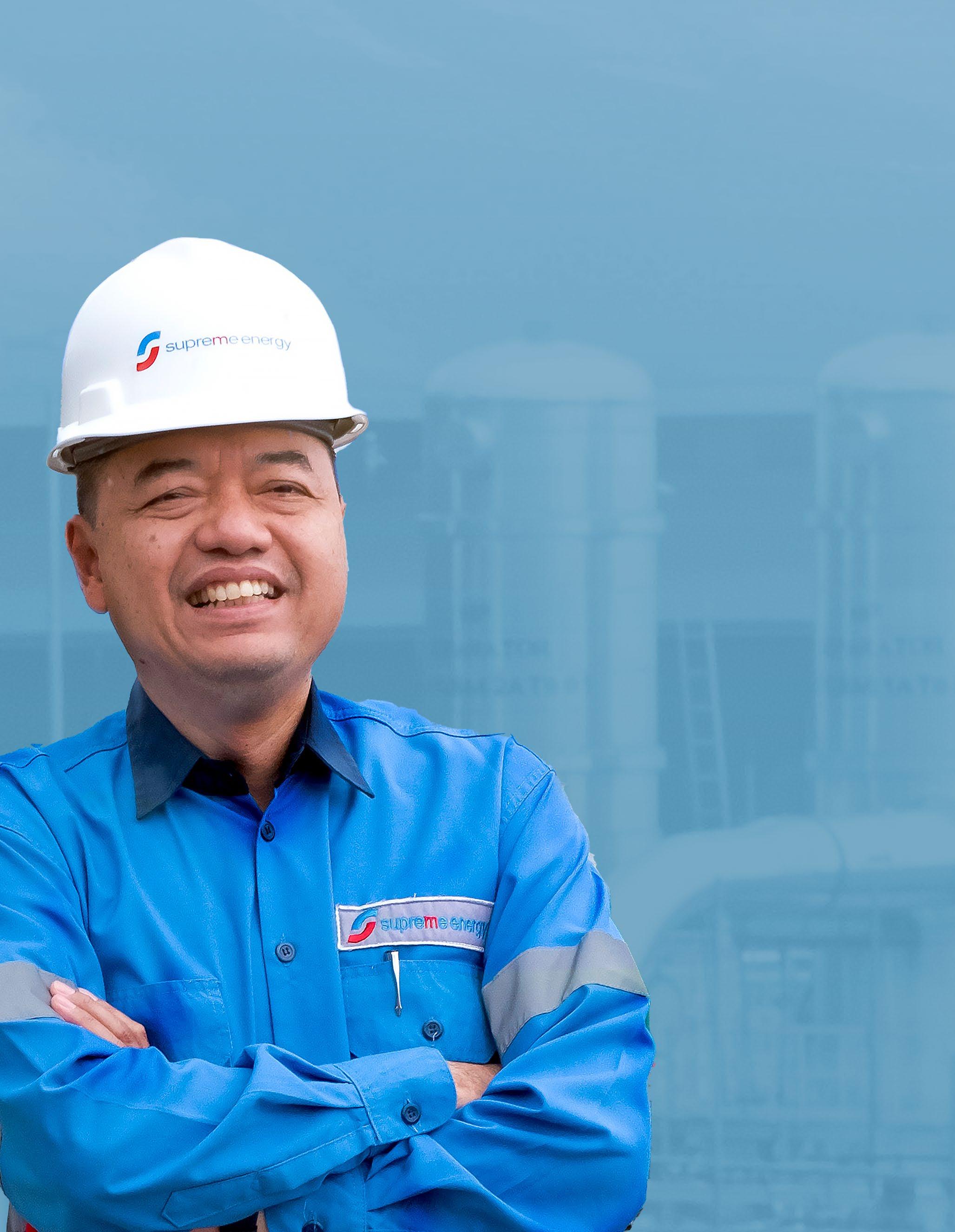


ISSUE 106 | DISPLAY TO 31 DECEMBER 2022 | www.asian-power.com | A Charlton Media Group publication US$360P.A. SUPREME ENERGY TAKES BOLD INITIATIVE TO DEVELOP GEOTHERMAL IN INDONESIA INDONESIA’S PERTAMINA GREENLIGHTS HYDROGEN DEVELOPMENT WHERE TO PUT BIG BATTERIES WITHIN AUSTRALIA’S ‘SKINNY’ POWER GRID WHY HONG KONG REMAINS ROBUST AMIDST ENERGY WOES OFFSHORE WIND STRUGGLES AS ASIA FACES POLICY BOTTLENECK Nisriyanto President and CEO, Supreme Energy DIGGING DEEP FOR GEOTHERMAL Nitin Apte CEO, Vena Energy p. 18 Dannif Danusaputra CEO, Pertamina NRE p. 26 Issue No. 106 Asian Power
Decarbonization is the destination for power plants. We have the roadmap.
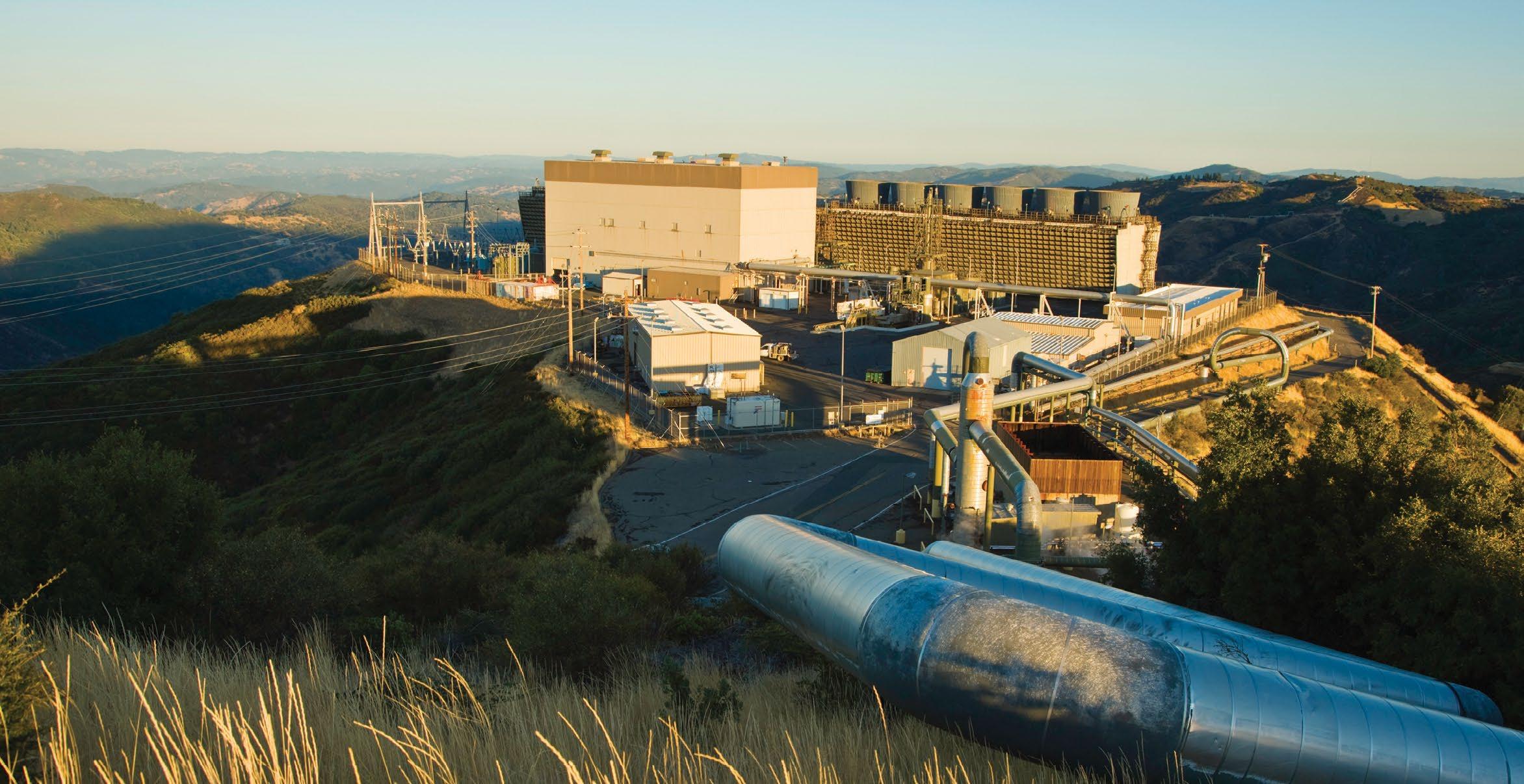
Together. Smarter.
TOMONI
the
TOMONI
to see
have



a
plant in

DATA FOUNDATION & ENABLERS O&M OPTIMIZATION PERFORMANCE IMPROVEMENT FLEXIBLE OPERATION
Powering
Energy Transition.
® Intelligent Solutions are powering new technology advancements such as artificial intelligence, analytics and remote monitoring—guaranteeing longer reliability, lower emissions and increased O&M savings to accelerate your path to decarbonization.
® Intelligent Solutions
changed the game for
geothermal
Mexico. Download our white paper at ChangeInPower.com/Geothermal
how.
Tim
Janine
With the skyrocketing coal and gas prices, Asian markets are looking to make use of previously untapped fuel resources and developing strategies to make their energy supply more diverse and secure. Offshore wind particularly has strong growth potential in Asia, but the industry could face headwinds as governments determine fitting policies.



In a market where there is plenty of land and a “unique” power grid, developers ask where is a good place to build a bettery. Vena Energy CEO Nitin Apte answers this and more in an exclusive interview on page 18. Indonesia’s Pertamina signs up for hydrogen pilot project development. We sat down with CEO Dannif Danusaputra on Pertamina’s plans to develop a new energy source as an oil and gas company. Read the full interview on page 26.
Next to the US, Indonesia is the second country with the largest geothermal energy source
world, but 91% of its geothermal potential remains unexplored. Supreme Energy takes a bold initiative to develop geothermal in Indonesia. President and CEO Nisriyanto gives an overview of the company’s latest project in an exclusive interview on page 24.
Read on and enjoy!
 Tim Charlton
Tim Charlton
ASIAN POWER 1
in the
FROM THE EDITOR
Asian Power is a proud media partner
and/or host
of the
following events and expos: SINGAPORE Charlton Media Group Pte Ltd. 101 Cecil St. #17-09 Tong Eng Building Singapore 069533 +65 3158 1386 HONG KONG Charlton Media Group Room 1006, 10th Floor, 299QRC, 287-299 Queen’s Road Central, Sheung Wan, Hong Kong www.charltonmedia.com Can we help? Editorial Enquiries: If you have a story idea or press release, please email our news editor at ap@charltonmedia.com. To send a personal message to the editor, include the word “Tim” in the subject line. Media Partnerships: Please email ap@charltonmedia.com with “partnership” in the subject line. Subscriptions: Please email subscriptions@charltonmedia.com. Asian Power is published by Charlton Media Group. All editorials are copyrighted and may not be reproduced without consent. Contributions are invited but copies of all work should be kept as Asian Power can accept no responsibility for loss. We will, however, take the gains. *If you’re reading the small print you may be missing the big picture PUBLISHER & EDITOR-IN-CHIEF PRINT PRODUCTION EDITOR COPY EDITOR PRODUCTION TEAM COMMERCIAL TEAM GRAPHIC ARTIST ADVERTISING CONTACT ADMINISTRATION ADVERTISING
Charlton Jeline Acabo Tessa Distor Vann Villegas Charmaine Tadalan Ibnu Prabowo Aulia Pandamsari Consuelo Marquez
Ballesteros Jenelle Samantila Simon Engracial Reiniela Hernandez reiniela@charltonmediamail.com Accounts Department accounts@charltonmediamail.com advertising@charltonmediamail.com

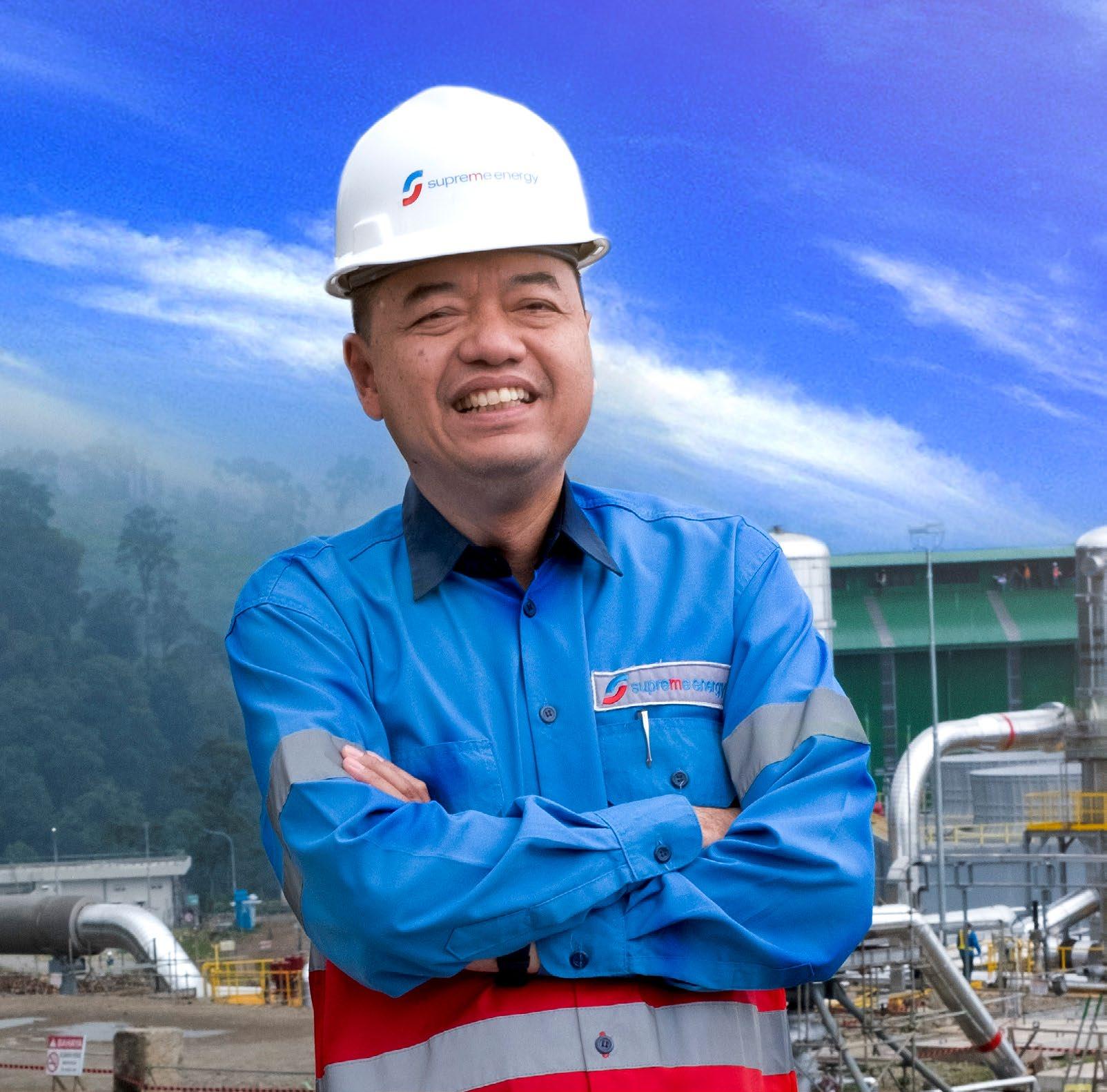
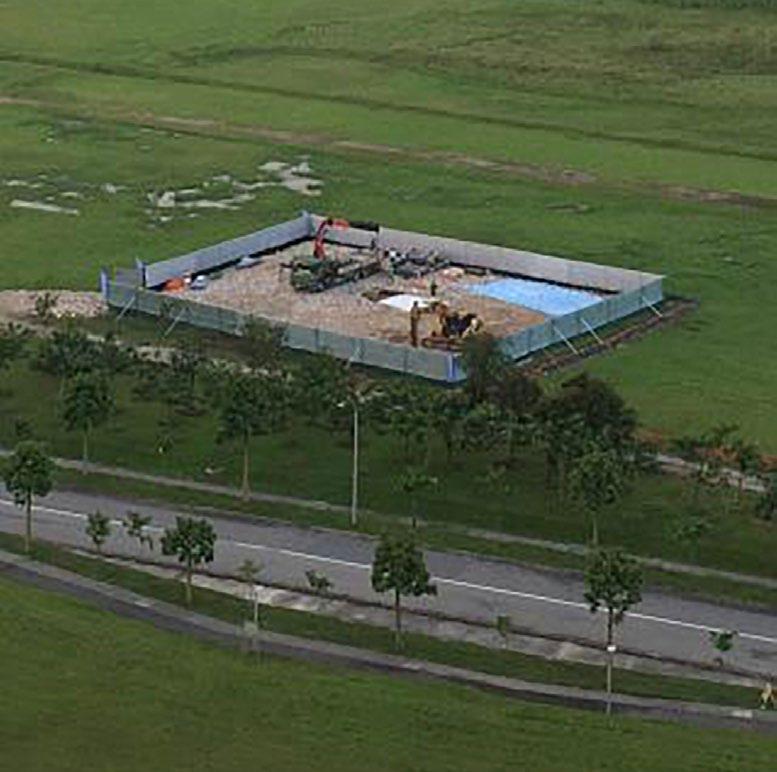

2 ASIAN POWER CONTENTS Published Quarterly by SG: Charlton Media Group 101 Cecil St. #17-09 Tong Eng Building Singapore 069533 For the latest news on Asian power and energy, visit the website www.asian-power.com HK: Room 1006, 10th Floor, 299QRC, 287-299 Queen’s Road Central, Sheung Wan, Hong Kong FIRSTS 06 Employment exceeds pre-pandemic levels: IEA 07 Asia’s offshore wind to reach over 100GW in 2031: report 08 TNB eyes early retirement for coal plants to accelerate sustain ability goals CEO INTERVIEW SUPREME ENERGY TAKES A BOLD INITIATIVE TO DEVELOP GEOTHERMAL POWER PLANT IN INDONESIA24 22 GENERATION REPORT ASIA TURNS BACK TO COAL AMIDST A GLOBAL ENERGY CRISIS OPINION 30 The future of fuel for critical power in Southeast Asia is here 32 As high LNG prices lure exporters into the market, Asian buyers may look for the exit 20 COUNTRY REPORT SINGAPORE DIGS DEEP TO UNLEASH GEOTHERMAL ENERGY POTENTIAL INTERVIEW VOX POP 16 Offshore wind struggles as Asia faces policy jams 18 Where to put big batteries within Australia’s ‘skinny’ power grid 26 Indonesia’s Pertamina greenlights hydrogen pilot project development 28 Why Hong Kong remains robust amidst energy woes 10 Will China’s coal push delay its dual carbon targets
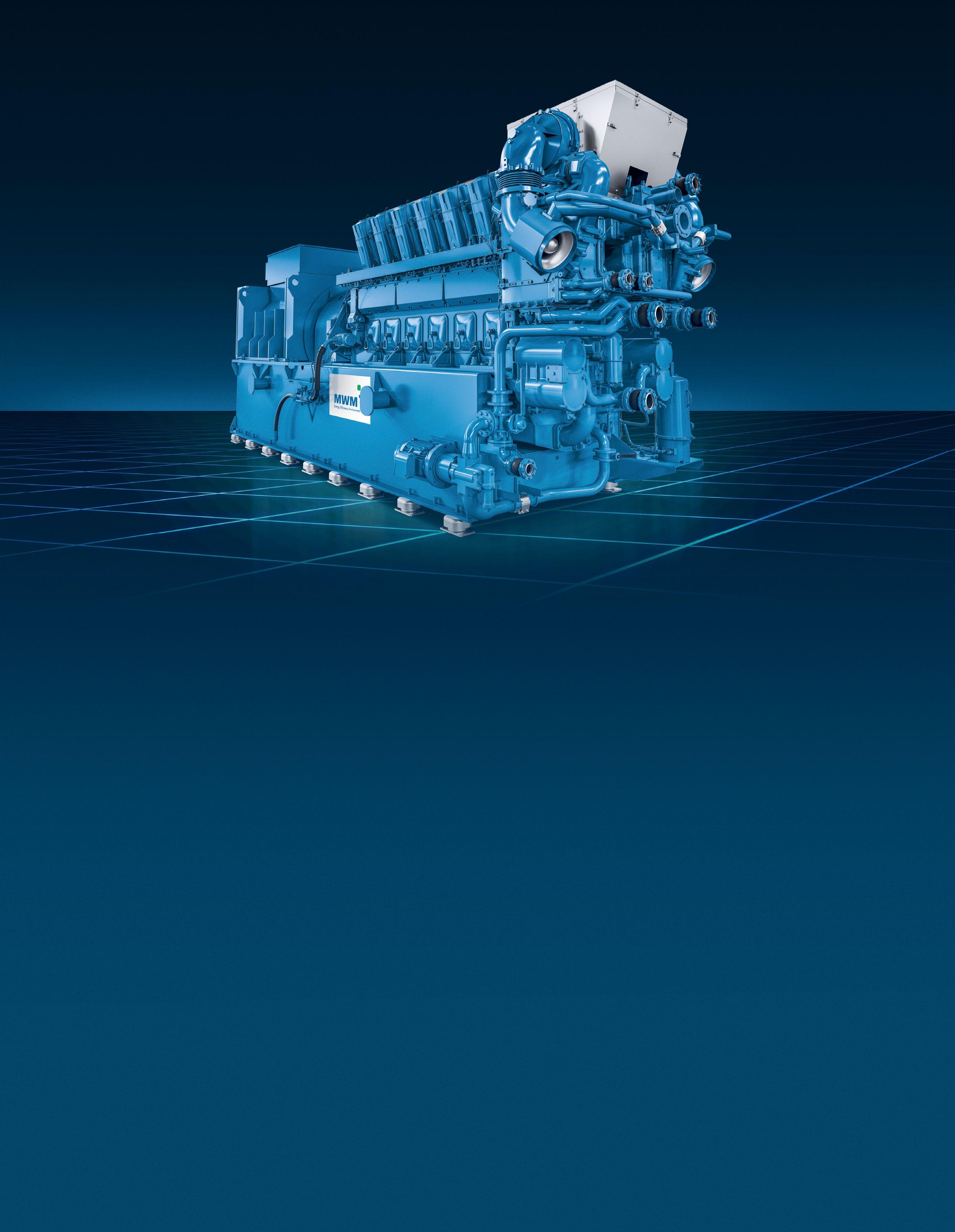
MWM gas generator sets of the TCG 2032 series are perfectly tailored to the challenges of a dynamic market environment. In the power range of 3,000 – 4,500 kWel reliability, flexibility, efficiency and environmental compatibility are ensured along with low life-cycle costs. In this way, they meet the high requirements of a wide range of applications and are highly profitable. www.mwm.net/tcg-2032-en High reliability. Low operating costs.
Daily news from Asia
Masdar has been critical in keeping the United Arab Emirates’ stance as a global leader in the energy sector. Now, the company has set its sights on expanding into Southeast Asia. But out of all the renewable energy markets in the region, why did Masdar start with Indonesia?

Will the energy bill dim out competition in SG’s electricity generation market?

The Energy Bill—particularly section 3(i) that allows the EMA to be a market player in the electricity generation market—has sparked concerns amongst stakeholders. This advantage given to EMA could give rise to the depression of wholesale electricity prices.


When Vietnam grew its solar power to 16.8 GW between 2019 and 2020, it showed great potential in renewable energy. But significant growth such as this needs to be backed up by a reliable transmission system—a lesson Vietnam learned the hard way as its grid overloaded, forcing it to restrict power.

Private firms eclipse the growth of the Philippines’ solar power industry
With only around 1,370 MW of installed solar capacity, the Philippines still has a long way to go before meeting its 20 GW target by 2030. This is even as the gov’t has provided enough support to enable the industry, leaving the fault to the private sector for having a supply that falls short of meeting high demand.
Why are Australia’s coal plants exiting at a faster pace?


Australian consumers have been enjoying lower electricity prices and are even expecting to pay 6% or $77 less in 2024, the Australian Energy Market Commission said. Thanks largely to the entry of low-cost renewable energy sources, like solar and wind, that penetrate the market.
Could phase-outs harm Asia’s nuclear energy growth?
When France, the US, Sweden, and Russia shut down their 40-year-old nuclear reactors, the global nuclear capacity inevitably lost 5.4 gigawatts (GW). Now that plans to phase-out nuclear reactors in South Korea and Japan hang in limbo, will Asia also risk losing a portion of its capacity?
News from asian-power.com
MOST READ
Masdar gains foothold in Southeast Asia through Indonesian solar project
Renewables growth in Asia risks collapse sans transmission system expansion
POWER UTILITYENERGY & OFFSHORE IPP POWER UTILITY POWER UTILITY IPP
Your shinesreliability
Securing

Energy & Storage solutions expertise
energy supplies Ensuring a reliable power supply is one of the key factors for progress and prosperity around the world. Building on decades of MAN innovation, we can help secure clean and efficient energy supplies for your customers. Our expertise covers solutions for hybrid power, LNG to power, energy storage, power-to-X, thermal power plants, and CHP. www.man-es.com
APAC TO GENERATE LION’S SHARE OF WORLD’S ENERGY BY 2030
The Asia-Pacific region is expected to generate 56% of the world’s energy by 2030, GlobalData reported.
Between 2022 and 2030, power generation in the region is projected to rise by 3.9% annually, higher than the 1.8% and 1.4% growth forecast in Europe and North America, respectively.
“Traditionally, growth has been reliant on increasing fossil fuel use, which is at odds with the burning need to decarbonize and limit the effects of climate change,” Robert Penman, Thematic Analyst at GlobalData, said.
“Climate change will increase energy demand and consumption even further.
APAC is expected to account for 43% of the total renewable energy generation by 2030, driven largely by investments in China Australia, and potentially, Mongolia.

“China is a clear winner when it comes to renewables in the APAC region. It has invested heavily in both solar and wind, and its highly productive companies will export these technologies and the necessary infrastructure worldwide,” Penman said.
“Australia will benefit greatly from the energy transition as it has access to key raw materials and enormous solar power potential—useful for hydrogen production.”
He also cited Mongolia’s potential for the production of a 2.6-terawatt renewable, which could be boosted by major advances in battery storage.
Wind power in APAC
Despite this positive outlook, the region, excluding China, lags in terms of the projected wind power capacity growth between 2022 and 2031.
In a report, Wood Mackenzie forecasted that installed capacity in global wind power is expected to grow 1.9%, or 25.6 gigawatts (GW), quarter-onquarter between 2022 and 2031.
This was largely driven by the Americas and Europe as the markets intensify their strategies and implement new climate policies, leading to a net upgrade of 21GWs. The Asia-Pacific region, excluding China, meanwhile saw a 1.9GW reduction.
Luke Lewandowski, Wood Mackenzie research director explained the reduction in the Asia-Pacific region was due to concerns about Vietnam’s state utility and slow development in Japan and South Korea.
“This is primarily due to the state utility in Vietnam not recognising new wind power over grid stability concerns, but also due to slow market development in Japan and project adjustments in South Korea,” Lewandowski said.“
Employment exceeds pre-pandemic levels: IEA
Employment in the energy sector “recovered strongly” despite the widespread layoffs particularly in the oil and gas supply at the start of the pandemic and is set to rise further on the back of clean energy growth as markets and companies pick up the pace of their decarbonisation moves.
In a report, the International Energy Agency said the energy sector employed more than 65 million people in 2019, accounting for around 2% of the total global employment, 21 million of which were in fuel supply, 20 million in the power sector, and 24 million in end users such as energy efficiency and vehicle manufacturing.
Total energy employment in 2021 rose by around 1.3 million from 2019 and could increase by 6% this year, the IEA said, noting that clean energy accounts for “virtually all” of the growth in energy employment.
“All drivers of energy employment are set to rise in 2022, but the turbulence afoot in global markets is reshaping which regions are seeing investment and how much of the increased economic activity flows to workers,” the report read.
“Total energy demand also climbed higher than pre-pandemic levels in 2021, with increased production driving a greater need for workers,” it said, adding that investments in energy are expected to rise by 8% this year and reach $2.4t.
The sector will see the fastest employment growth in recent years in 2022 but it may face challenges in hiring and the supply chains due to high input costs and inflationary pressures. These challenges may already be present in some regions and sectors like solar, wind, oil, and gas.
The clean energy sector accounted for over half of the total workforce due to the increase in the number of projects that are expected to commence operations, according to IEA.
Around 7.8 million employees are in the low-carbon power generation, mainly in the solar and wind sectors, at the same level as the oil supply.
Meanwhile, the fossil fuel sector, including coal, currently employ almost 32 million workers globally. The IEA said that some companies are moving some of their employees to the low-carbon segments internally to retain them, and enable flexibility to shift workers to different segments if needed.
“However, this is not an option everywhere, and ensuring a just transition for affected workers is a growing focus for policymakers in many regions, especially for coal, which has already seen consistent declines since 2015,” the IEA said.
Asia Pacific
The agency also said that more than half of the employment in the energy sector is in the Asia Pacific region due to the rapid infrastructure development in the region, surpassing the others. China also holds almost 30% of the total workforce.
The lower-cost labour in APAC resulted in the rise of significant clean energy manufacturing hubs that provide supply to renewable projects globally such as solar, electric and hybrid vehicles and batteries, contributing to the rise of employment in the region, it said.
On the other hand, it noted that North America and Europe hold sizeable employment on projects abroad and domestically such as in oil, gas, wind, and vehicle engineering.
The IEA said that in all scenarios, employment in the sector will grow and outweigh the decrease in jobs in the fossil fuel sector. In the net-zero emissions by 2050 scenario, the agency said around 14 million new jobs in the clean energy sector will be added by 2030. Another 16 million will move to new roles in clean energy.

All drivers of energy employment are set to rise
“Countries around the world are responding to the current crisis by seeking to accelerate the growth of homegrown clean energy industries. The regions that make this move will see huge growth in jobs,” IEA Executive Director Fatih Birol said.

6 ASIAN POWER
ASIA PACIFIC
China holds almost 30% of the total workforce in Asia (Photo by Jiri Rezac)
ASIA PACIFIC
FIRST
Fatih Birol
Asia’s offshore wind to reach over 100GW in 2031: report
Theattractiveness of offshore wind will drive the stronger growth of the market in Asia as it is projected to reach 108.8 gigawatts (GW) in 2031, Fitch Solutions reported.
This is a significant increase from the 27.3GW offshore wind capacity recorded at the end of 2021, reflecting an annual average growth rate of 15.3% between 2021 and 2031.
“This view is strongly supported by Asia’s strong offshore wind power project pipeline, currently standing at about 127.9GW in our Key Projects Database,” Fitch noted in a report.
“We expect strong upside risks to this forecast as more offshore wind power projects come online over the decade.”
Fitch added that its projection is supported by markets, such as Australia and the Philippines, that have started
looking into the possibility of developing offshore wind power through exploratory roadmaps and feasibility studies.
The region presents opportunities for the development of offshore wind power, considering the large number of coastal cities in Asia as well as the high and consistent wind loads off the coasts.
“We expect Asian markets with long coastlines and supportive renewable energy policies to capitalise on offshore wind strengthening their project pipeline,” the report also read.
At present, Mainland China is the leading market in the region in terms of offshore wind. The market is expected to account for 87% of the total offshore wind power capacity growth in Asia projected between 2021 and 2030.

The report noted that this growth is supported by the abundance of favourable
We expect strong upside risks to this forecast as more offshore wind power projects come online
locations in China, coupled with the increasing cost competitiveness of wind power technologies in the market. China particularly sees its offshore wind power capacity grow from 26.4GW in end-2021 to 96.8GW in 2031, at an annual average growth of 14.3%.
Emerging markets
Australia and India are the markets to watch in terms of the emergence of offshore wind over the next 10 years due to the developments in government policies that will encourage the growth of the energy sector.
Fitch noted in the report that it sees potential for the emergence of offshore wind in Australia despite having no deployments after the government designated its first zone for offshore wind power developments in September.
“This move gives developers more clarity to explore offshore wind in the market, with the permit allowing them to progress through project planning and consultation stages,” it said.
However, Fitch said in the report that it will still hold forecasting Australia’s offshore wind market as any project construction have yet to start.
India, meanwhile, has been studying offshore wind since 2014 following the 100MW demonstration of a project in Gujarat which is still in the planning stage.
Fitch cited the plan of the Ministry of New and Renewable Energy to hold bids for two 1GW offshore wind projects in Gujarat and Tamil Nadu.
“This will mark a significant development in India’s offshore wind sector if launched and well-received, as India has yet to develop any offshore wind. We have yet to forecast any offshore wind for India as we remain apprehensive given its poor track record of commissioning power projects on time,” the Fitch report said.
VENA ENERGY’S HYBRID SOLAR, BATTERY PROJECT IN AUSTRALIA HITS FINANCIAL CLOSE
Renewable
energy firm Vena Energy has reached a financial close for its hybrid solar and battery energy storage system (BESS) project in South Australia, which is expected to start operations in 2023.
In a statement, Vena Energy said the Tailem Bend 2 Hybrid Project would have a 128.5-megawatt (MW) capacity once completed, 87MW will be from the solar projects and 41.5MW will be the BESS.
It is the company’s first operational system to combine solar and battery, following the first stage of the Tailem Bend Solar Project which started operations in 2019.
“Vena Energy’s mission is to accelerate the energy transition across the Asia-Pacific region, and the Tailem Bend BESS is an example of this shift as it will provide both generation and storage for renewable energy to the South Australian network as part of its plans to achieve net-zero by 2030,” said Owen Sela, head of Vena Energy Australia.
Sela added that the company has around five
gigawatts of renewable energy projects in the pipeline in Australia.
Tailem Bend 2 Hybrid Project is Vena Energy’s third financing arrangement in Australia. It is backed by the DBS as the joint-green structuring bank, technical coordinator, facility agent and project account bank; ING as the joint-green structuring bank and financial model coordinator; and Siemens Financial Services through the Siemens Bank.
The solar farm can supply electricity to around 35,000 homes annually and reduce over 207,000 tonnes of carbon dioxide greenhouse gas emissions or equal to planting more than 3.4 million trees, according to Vena Energy.

Solar power generated from the project is under a purchase agreement signed by ZEN Energy to support its South Australian customers.
The company said the battery energy storage system would provide energy storage and ancillary services to support the South Australian grid’s reliability.
ASIAN POWER 7
ASIA PACIFIC
Asian
markets with long coastlines are expected to capitalise on offshore wind
(Photo: Bangui Wind Farm by Jhay-Ann Santos)
The 128.5MW project is expected to come online in 2023 FIRST
ASIA TO ACCOUNT FOR 63% OF RENEWABLES CAPACITY ADDITIONS


TNB eyes early retirement for coal plants to accelerate sustainability goals
MALAYSIA
Globalrenewables capacity additions over the decade are expected to reach two terawatts (TW), with Asia accounting for 63% of the total capacity growth, according to a report by Fitch Solutions.
Fitch made an upward revision to its outlook from the previous 1.8TW new addition forecast.
“This is driven by new efforts to ensure regional energy security amid volatile energy markets and more aggressive renewable targets,” it said.
“Surging renewable growth in the near term will stabilise slightly over the coming decades as the effects of COVID-19 delays and stimulated growth are eased,” it added.

The growth in renewables will be boosted by the solar sector, which is expected to add 1.2TW, significantly higher than the 0.8TW additional capacity expected in the wind sector. This is due to the sector’s wider global appeal and increasing solar rooftop targets.
Fitch added that the rise of renewables will be bolstered by the expansion of green hydrogen, the increasing power consumption and policy instruments such as carbon pricing. The EU, Mainland China, India, Japan, and the US will also account for 77% of the rise in nonhydropower renewables.
Non-hydropower sources
Meanwhile, Asia will have around 66% of its capacity growth coming from non-hydropower renewable energy, Fitch said adding that there are upside risks as markets are pushing for more renewables and shifting away from fossil fuels.
Wind power generation will surpass solar as further technology developments in the sector will support its growth.
Mainland China will still be the main contributor to the region’s Asia’s non-hydropower renewables growth with its robust solar and wind equipment manufacturing industry along with strong commitments from the government.
In the Middle East and North Africa (MENA) region, solar capacity will remain the dominant non-hydropower renewable electricity as it is expected to reach 42 gigawatts (GW) by 2031, up from 11.1GW by the end of 2021.
In a report, Fitch Solutions said wind power will also have a“robust growth” in some markets in the MENA due to high natural potential and government support.

“The burgeoning green hydrogen sector poses a considerable upside risk to our solar and wind power forecasts in key MENA markets, though technical challenges, weak private sector participation and lack of government support will all present obstacles to the industry,” it said.
Malaysia’s
Tenaga Nasional Berhad (TNB) is planning to retire selected coal plants earlier than the expiration of their power purchase agreements in a bid to accelerate its sustainability goals to reach net-zero emissions by 2050.
In a statement, TNB said the coal retirement plans will help increase the enterprise value and transition the portfolio of the TNB Power Generation Sdn Bhd (GenCo).
“We hope to start with Kapar Energy Ventures (KEV), and are exploring the viability of retiring the 1400 MW plant up to a year ahead of its PPA expiration subject to shareholders’ agreement and approvals from the relevant authorities and regulators,” said TNB President and CEO Dato’ Indera Ir. Bahrin Din.
“As for repowering plants with new technology, we have recently received a Letter of Intent to allow the repowering of our 1400 MW gas-powered plant in Paka, which we intend to make hydrogen ready by 2029,” he said.
TNB is also seeking collaboration with technology partners to provide technology that will help GenCo venture into cleaner sources, such as hydrogen.
Bahrain said they aim to capture by 2050 a “significant share” of around RM40b of the clean energy market which is estimated to reach between RM65b to RM80b.
UZB wind project secures funding
“Through these deliberate steps to increase its enterprise value and sustainability position, we are also staying open to the possibility of an Initial Public Offering (IPO) of GenCo, should the opportunity come up,” Baharin said.
Aside from this, the company also plans to grow its renewable energy portfolio in its adjacent markets in Asia Pacific and Europe. It plans to install over 14 gigawatts (GW) of renewable energy by 2050 which can help avoid around 6.9 million total carbon dioxide per megawatt-hour.
The company also aims to continue investing in developing the Grid of the Future, and accelerate the adoption of electric vehicles (EV) to capture a potential RM1.3b market value by 2030. It will also invest RM90m to support the EV ecosystem in the span of three years.
We are exploring the viability of retiring the 1400 MW plant up to a year ahead of its PPA expiration
starts
Abu Dhabi-based Masdar said that it reached financial close for Uzbekistan’s first utility-scale wind farm with a 500-megawatt (MW) capacity, expected to supply power to 500,000 homes.
In a statement, Masdar CEO Mohamed Jameel Al Ramahi expressed gratitude to the anchor lenders who supported the Zarafshan wind project namely the European Bank for Reconstruction and Development, the International Finance Corporation, the Asian Development Bank, and Japan International Cooperation Agency.
The 72-megawatt (MW) Arayat-Mexico Solar Farm, developed by Philippine firms ACEN and Citicore, has started its full operation.
The new solar farm is expected to generate 105 gigawatt-hours (GWh) of renewable energy, which is equivalent to powering 45,000 homes in the Philippines.
“As we work towards our bold vision to reach 20 GW of capacity by 2030, we aim to accelerate the energy transition across the region,” Jose Maria Zabaleta, chief development officer of ACEN, said in a statement.
NTPC’s 56-megawatt (MW) Kawas Solar Photovoltaic Project in Gujarat started its operations, bringing the company’s total installed capacity to 69,454MW.
In a statement, the company said it is “steady lowering” its carbon footprint with the installations of renewable energy projects.
Its pipeline includes the 262MW floating solar over 1,300 acres of its own reservoir, 242MW of which has been commissioned.
NTPC Group aims to reach 60 gigawatts (GW) of renewable energy by 2032.

8 ASIAN POWER
ASIA PACIFIC
New PH solar farm
operation NTPC commissions Kawas Solar project PLANT WATCH UZBEKISTAN PHILIPPINES INDIA
It plans to retire 1400MW plants
FIRST
Knowledge in Power
Whether global or local, events that change the way we live and work only intensify the demand for reliable electricity. And they amplify issues like financing and regulation that make the path toward sustainable, resilient grids challenging.

Stay informed
free access to Black &
In these times of uncertainty and rapid change, we’re investing in you with forward-looking educational webinars on the latest trends, technical resources and best practices across power generation, transmission and distribution.
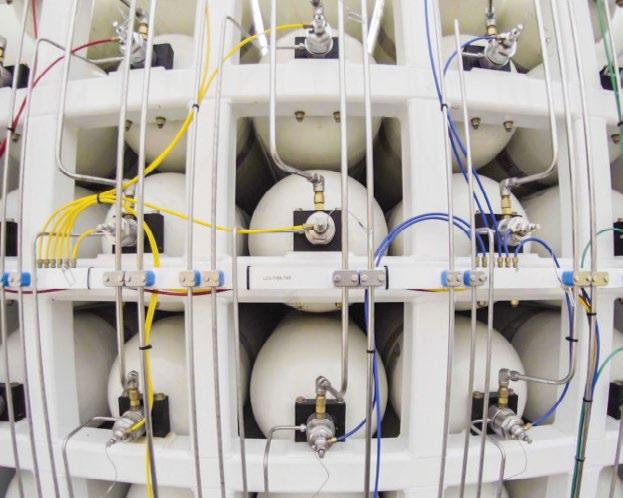
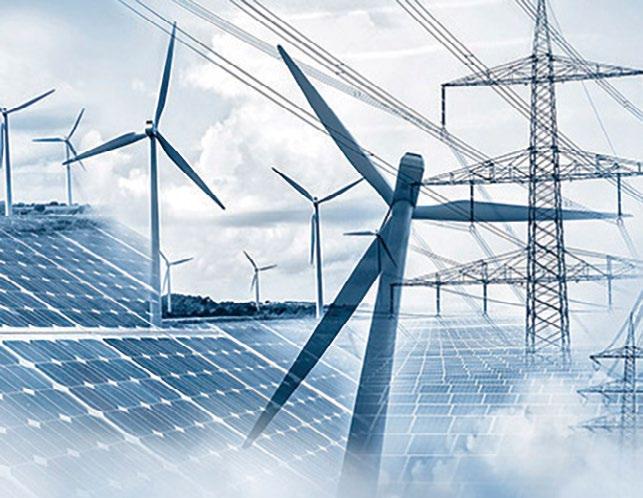
Black & Veatch is your partner in delivering innovative, end-to-end services and full engineering, procurement and construction (EPC)
Let us help you safely achieve profitable outcomes while improving the communities you serve. bv.com/power-on-demand

ASIAN POWER 9
with
Veatch’s Repowering Asia Webinar Series.
solutions.
Watch Now Watch Now
Watch
Now Renewable Integration into the Transmission Systems Hydrogen Market Overview Hot Topics When Considering Solar PV and Battery Energy Storage Projects
Will China’s coal push delay its dual carbon targets
China
David Fishman Senior Manager, The Lantau Group:


In 2021, we’ve seen China continue to build coal plants and expand its coal mining capacity. This is something that is still possible to do under China’s current energy planning. China’s decarbonisation plan calls for a carbon peak to be reached in 2030. But since there is a coal consumption peak declared for 2025, it means that before 2025, the amount of coal consumed in the economy or to keep the economy moving for any purpose—including power generation or steel production—could still be increased and then must be peaked in 2025.

For building coal-fired power inside of China, the important question to consider is not just whether the capacity is being built, but also how much is going to be used because building a coal plant does not necessarily mean it is going to be used all the time. We’re still seeing coal being built in China, which will be used in provinces building a lot of renewables, but that will still need some other form of firm supply to meet their needs in the evening or other periods when variable generation is unavailable.
In terms of meeting its milestones for 2025 and 2030, these milestones should not be affected. They would still plan to cap at that time, it could mean that the level that it caps at will be a little bit higher than it was previously, if you chose to set that cap in 2021 or 2022.
Carlos Torres Diaz Head of Power Research, Rystad Energy:
International coal prices have increased significantly this year so China is trying to reduce its dependency on imports. API 5 prices, which is a reference for the region, have increased from a level of US$160 per tonne in the third quarter of 2021 to more than US$400 per tonne recently.
China is also trying to reduce imports of LNG as prices remain at a record-high level.
Further, China is currently prioritising its energy security and aiming to limit power generation costs to the extent possible. This means using more coal in the power mix.
As a result, it is likely that carbon emissions from the power sector will increase this year and next at a faster pace than previously expected. However, most investments in new energy capacity are still for solar and wind technologies so the long-term target for net-zero and carbon neutrality could remain unchanged.
We see a similar trend across the world where countries are prioritising energy security above climate. European coal power generation has increased 11% this year. India has also aimed to increase domestic coal production and is currently studying the slower retirement of aging coal power plants.
Pavan Vyakaranam Analyst, GlobalData:

Energy security is the key reason for China pushing for coal. China is facing a severe electricity crisis because of tight supply and high demand for power, which is a result of the worst heat wave the country had witnessed in the last 60 years.
Industrial users producing metals, chemicals, and other industrial goods in China’s Sichuan region are forced to shut down for a week to prioritise residential supply. Sichuan province ordered the suspension of industrial production during August 15 to 21 to avoid blackouts.
The current economic conditions and growth predictions make it highly unlikely for China to achieve its dual carbon targets. The current electricity crisis led China to lift restrictions on coal production domestically and imports from Russia. This will derail efforts made with respect to emission reduction in the short term.
There will be an increase in coal-based electricity generation in the region to overcome the current energy crisis. Of the total coal capacity under construction in the world, the Asia region has over 94.5% capacity. China alone accounts for over 48% of the total under construction coal capacity in the world and has a share of over 51% of coal capacity under construction in the region. China is followed by India which accounts for 20.6% of under construction coal capacity in the Asian region.
10 ASIAN POWER
VOX POP
A coal mine in Hailar, Inner Mongolia, China (Photo by Herry Lawford)

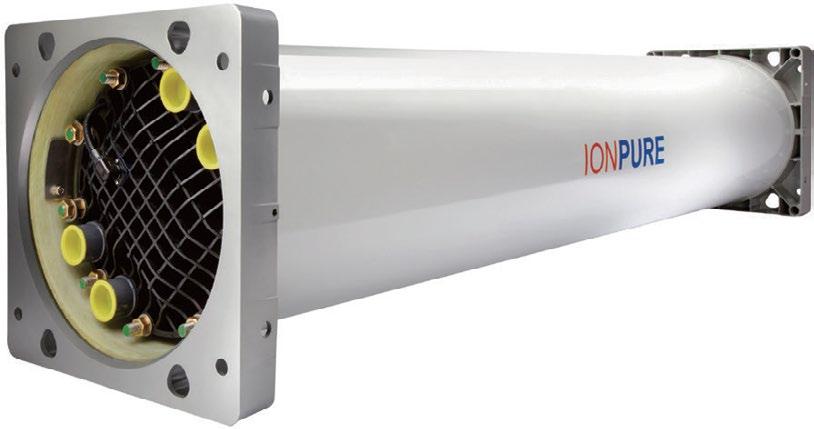
Ionpure® Continuous Electrodeionization (CEDI) Products The first to commercialize continuous electrodeionization (CEDI) for water purification evoqua.com sales.sg@evoqua.com A chemical-free, self-regenerating technology used to provide a consistent flow of high-quality deionized water NO CHEMICALS REQUIRED Deionized water without the need for dangerous or costly chemicals GREEN TECHNOLOGY Energy e cient and safer for employees and the environment NO REGENERATION WASTE Resin regeneration does not require deionization tank replacement or unnec essary transportation of chemicals CEDI modules with the widest flow range lonpure is a trademark of Evoqua Water Technologies LLC, its subsidiaries or a lliates in some countries. © 2022 Evoqua Water Technologies LLC
What future-proofing looks like for the energy market

In a world of changing expectations and soaring energy prices across the globe, customers are facing a challenging future. The energy industry is exploring options for increased sustainability, emission control, and reduction.
Industry players need to improve and adapt operations in order to be future-proof.
Climate concerns have already placed pressure on traditional ‘take, make, dispose’ business models, i.e. a linear approach whereby we buy new, use, and get rid once we are done. Whilst the industry has utilised this traditional model in the past, it will not hold up to the changing landscape of today.
Moving to a circularity approach, in contrast, decouples economic activity from the consumption of materials and energy by creating closed-loop cycles in which waste is minimised and resources are reused. Even sectors such as oil & gas can introduce elements of circularity in their operations.
The uptake of reuse in the energy industry is not as good as it should be. There’s a real opportunity for reusing instead of disposing
when equipment is close to decommissioning. EthosEnergy’s value is to provide economic, social, and environmentally beneficial solutions to extend the life of existing equipment. Utilising this leads to significant cost savings for businesses, as well as critical CO2 savings.
To transition from a linear economy to a circular one, industry players need to look across three key areas: how to maximise product use; prioritise renewable inputs; and how to recover by-products and waste.
EthosEnergy has already developed a suite of life extension and emissions compliance solutions to support current assets in meeting critical targets. Operating in over 100 countries, it relies on the potential to deliver services and solutions globally for rotating equipment to make energy affordable, available and sustainable.
“Customers are looking for a localised strategy.
Certain services and technologies are not made available from the region’s perspective. However, a number of assets are quite mature in [the power, oil & gas, industrial and aerospace markets] which clients have good knowledge of and are comfortable exploring alternative services,” said Ken Peerapong Hansakwong, Regional Sales Director APAC at EthosEnergy.
For them, there is a need for more collaboration and alignment between business, social, and environmental factors to work through the energy crisis and achieve success.
EthosEnergy’s solutions also have a significant impact on CO2 emissions across two fronts: first, they avoid the production of new equipment and therefore avoid emissions during the manufacturing process; second, they can avoid or postpone the recycling of aged assets, reducing CAPEX expenditure.
12 ASIAN POWER THOUGHT LEADERSHIP ARTICLE
EthosEnergy’s suite of life extension and emissions compliance solutions aims to make energy affordable, available, and sustainable for its clients.
What companies should be looking for is a partner that could provide technology [or] solutions suited to their existing assets, or the ability to develop one
ECOMAX® combustion tuning platform
Gas Turbines

EthosEnergy also offers gas turbine solutions across a range of original equipment manufacturers (OEMs). Its solutions and services are known to reduce emissions, increase reliability and availability, and reduce capital expenditure.
At the same time, EthosEnergy has extensive experience in services for multiple gas turbine product lines—derivatives, light and heavy industrial gas turbines, and components and accessories. The company also provides gas turbine repair services in the power generation, industrial and oil & gas markets, where its advanced technology repair and coating facilities are committed to developing solutions that keep customers within their budgets and timescales.

Its ECOMAX® combustion tuning platform provides an automated, fully customisable solution to achieve customer-determined operational objectives. This patented technology continually monitors and adjusts key combustion control parameters to maintain NOx and CO compliance, flame stability,
and acceptable combustion dynamics. It also provides operators with customisable operational goals, emissions management and compliance, combustion dynamics control and mitigation, and increased fuel flexibility, amongst others.
For EthosEnergy, achieving operational flexibility is critical to maximising output and environmental effects.
ECOMAX® has helped save in the region of $15m in capital expenditure. It has also increased reliability and has helped power plants to maximise their output, better manage emissions, as well as reduce the risk of human error through manual tuning. Furthermore, EthosEnergy’s end-of-life rotor solutions have been engineered to meet or exceed the OEM’s recommended end-of-life specifically targeted to ageing fleets. Only the life-limiting components of a rotor are replaced, thereby minimising the overall project cost for the user.
“Our rotor program is centred around commercially flexible solutions that provide a customised approach to meeting your needs.
Through the evolution of our manufacturing process, we have developed innovative solutions to extend the life of GE rotors,” added Ken.

There are significant advantages to extending the life of existing assets compared to replacement, most notably in cost and reducing carbon footprint. It also has a reduced turnaround time and it is flexible versus other rigid OEM offerings.
With the current energy transition, energy companies should look for a solutions partner to support them in navigating this complex landscape.
“Everyone plays an important role in this transition. What companies should be looking for is a partner that could provide technology [or] solutions suited to their existing assets, or the ability to develop one. This will assist in [the] transition and sustainability point of view,” said Ken. In the coming years, energy companies will be challenged on how they handle ageing or existing assets through the transition period to net-zero. EthosEnergy’s solutions will help companies take advantage of the opportunities brought by this transition.

ASIAN POWER 13 THOUGHT LEADERSHIP ARTICLE
EthosEnergy offers gas turbine solutions across manufacturers
EthosEnergy’s end-of-life rotor solutions
EthosEnergy’s rotor program is centred around commercially flexible solutions
Ken Peerapong Hansakwong, Regional Sales Director APAC at EthosEnergy
Energising power generation in Asia
For over 25 years, Sulzer has supported Asia’s growing energy sector with advanced turbo services.
Rapid industrialisation, the increased energy demand and the energy transition present operators in the Asian power generation sector with multiple challenges. Ensuring that critical equipment in these applications can operate reliably is imperative for safeguarding the energy supply.
With a local presence in the region for over a quarter of a century, Sulzer has supported players in Asia’s power generation sector with market-leading services and solutions. An established expert, Sulzer provides around-the-clock engineering support, including speciality turbomachinery services, enabling operators to maximise equipment uptime.
Asia’s evolving energy landscape
Asia’s economic growth has driven a 200% increase in power demand over the past two decades.1 In response to this, coal, oil, gas and renewable energy infrastructure has developed rapidly. Concurrently, Asia is moving towards a low carbon future. As grid system adapts to the integration of renewables, equipment in power stations is having to adapt to different duty requirements and operating points. To reliably meet these demands takes in-depth engineering knowledge and experience.
One-stop-shop for rotating equipment
Throughout the development of Asia’s energy markets, Sulzer has proved itself as the premier onestop engineering partner for major utility-scale power plants and independent power producers (IPPs). It provides 24/7 repair and upgrade services for all types of rotating equipment, including steam turbines, gas turbines, generators, pumps, compressors, motors, and more. With over two centuries of power generation engineering heritage, Sulzer’s knowledge of legacy and modern equipment operational across the sector is unrivalled.
This is especially true for turbomachinery. Sulzer’s service centres in Purwarkata, Balikpapan, Nantong, Maitland and Vadodara offer more than 18,000 m2 of turbomachinery-focused workshop space, over 500 technical staff and seamless access to the wider Sulzer global network. These facilities are adept at servicing all types and brands of steam and gas turbines.
Providing an expanded offering to customers, Sulzer’s other 14 service centers in the region supply expert pump and electromechanical repair and upgrade services. As a global pump OEM, Sulzer delivers leading maintenance support and retrofits for critical equipment such as high-energy pumps. Complete rewinds and refurbishments of motors and generators are also available in-house. These capabilities provide operators with a responsive, turnkey approach to repairs and upgrades for equipment from any brand.
Advanced turbomachinery capabilities
Thanks to Sulzer’s commitment to continuous modernisation of facilities across the region, stateof-the-art equipment is available for turbomachinery of all sizes. Precision machine tools and 3D laser
scanning equipment support the reverse engineering and manufacture of replacement parts. Largecapacity submerged arc welding systems with multiple heads allow high-quality dimensional restoration. The very latest CNC vertical lathes and milling machines combine with a wide range of portable equipment to support any repair. The ability to service big turbines is guaranteed with a cranage capacity of up to 60 tonnes and portable dynamic balancing for equipment up to 100 tonnes. To prove turbine performance, non-destructive testing (NDT) and load testing capabilities are available too. This completes the lifecycle of a servicing project, ensuring a turnkey approach for customers.
Specialist, technically advanced turbomachinery capabilities, a global network of experts, and a century of turbomachinery engineering heritage are what differentiate Sulzer. Customers can benefit from on-site troubleshooting and overhauls, material upgrades for equipment, and digital preventative maintenance solutions. The business can also manufacture or reverse engineer spare parts, including complex items such as turbine blades, using CNC machines and additive manufacturing.
This supports Sulzer’s comprehensive retrofit services, which enable existing equipment to be cost-effectively enhanced to meet new efficiency and performance standards within the same footprint. This reliably extends the lifecycle of legacy equipment too, including steam and gas turbines. Generator rewinds are another Sulzer specialism. Additionally, Sulzer offers turnkey coil manufacturing in-house, supported by its database of over 10,000 coil designs.
Proven in turbomachinery projects Sulzer has successfully serviced over 1’500 gas and steam turbines, 400 plus compressors, and more than 300 turbo generators in Asia. All in all, Sulzer has supported over 53 GW of turbine capacity, which is a sizeable contribution to regional energy security. Building on this impeccable track record, Sulzer is adding to its reputation by breaking new ground
throughout Asia.
This year, for example, Sulzer is supporting the major turnkey restoration of a 600 MW steam turbine and generator, the biggest capacity ever managed by Sulzer. It entails replacing 31 rows of turbine rotor blades within a short timeframe to minimise customer downtime. To complete the repair, the turbine stator, generator stator, and generator rotor are to be overhauled, supported by specialist weld repairs, on-site commissioning, and high-speed balancing. The repair required shipping equipment from Vietnam to Indonesia, a testament of confidence in Sulzer’s capabilities.
Meanwhile, in China, Sulzer’s combustion autotuning system contributed to a 30% reduction in nitrogen oxide (NOx) emissions from gas turbines at a Jiangsu-based power plant. Furthermore, the project delivered a combined capital expenditure and maintenance cost saving of more than USD 2 million to the operator.
Recently, Sulzer’s service centre in Indonesia conducted a swift in-house repair of a 14-tonne steam turbine rotor for a power plant in the Philippines. The team minimized the lead time for the repair by chartering Antonov cargo planes to transport the large rotor to the service centre and back. This ensured that the 150 MW generator, which supplied 100’000 homes with power, was reinstated as quickly as possible.

Asia’s energy expert
As the power generation landscape in Asia continues to evolve, Sulzer provides wide-ranging capabilities to respond to any new demand placed on turbomachinery and rotating equipment in energy applications. Progressive innovation has positioned the company to adapt to different requirements across the industry, enabling it to support evolving operational demands placed on power players due to the energy transition. As a result, energy suppliers can effectively respond to industrialisation, population growth, and the increasing flexibility requirements of the electrical grid – improving energy security.
By partnering with an experienced, best-in-class engineering services partner like Sulzer, operators can continue to reliably keep pace with Asia’s energy demands well into the future.
Find out more about Sulzer’s capabilities in Asia here: (Link to view or download interactive PDF)
14 ASIAN POWER CO-PUBLISHED CORPORATE PROFILE
1 [https://www.woodmac.com/news/opinion/asias-power-sector-feels-the-burn/]

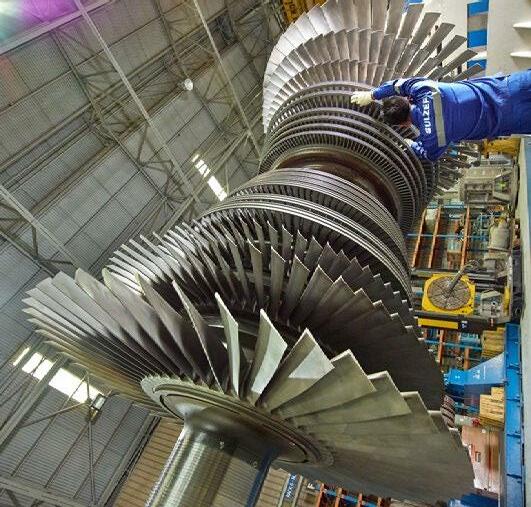
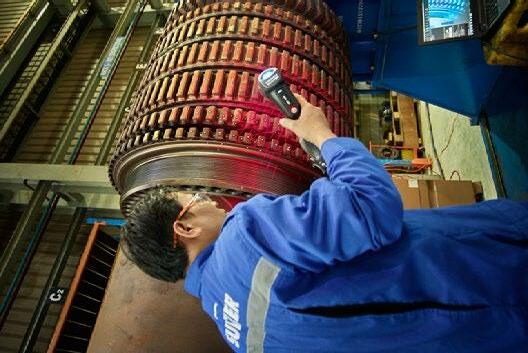
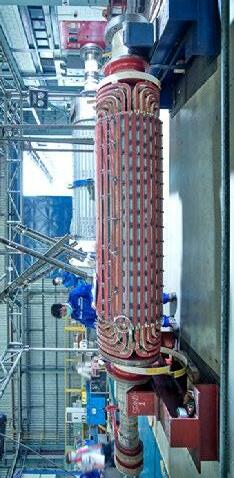
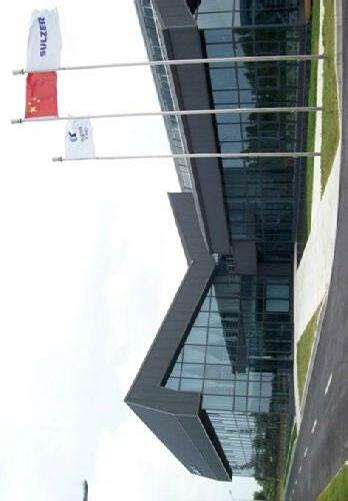
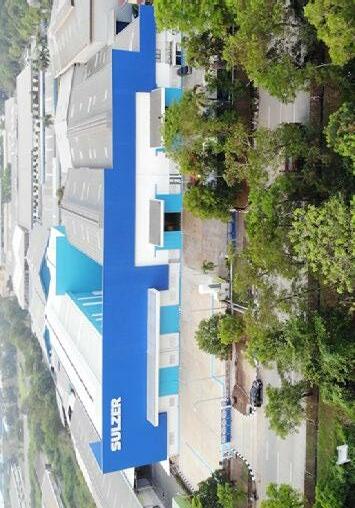


Comprehensive service network and impeccable turbo services track record 25+ years of experience 1550+ gas and steam turbines serviced 400+ compressors serviced 53+ GW of turbines serviced 19 service/sales locations 500+ engineering and technical personnel 300+ turbo-generators serviced 4M+ manhours safety record 35000+ sqm of workshop space 18000+ sqm of turbo-focused workshop space Service center TS-focused service center Sales office Turbine overhaul Coil manufacture & rewinding Reverse engineering & parts production Turbo-generator overhaul Purwakarta, Indonesia Maitland, AustraliaBalikpapan, Indonesia Nantong, China 25+ 19 Services highlight
Offshore wind struggles as Asia faces policy jams
This may challenge Asia’s momentum in replacing Europe as the largest offshore wind market.
Between renewables and thermal power, markets now deem they are better off building renewables that have become cheaper over the years. Offshore wind particularly has strong growth potential in Asia, but the industry could face headwinds as governments determine fitting policies.
In its Global Offshore Wind Report 2022, the Global Wind Energy Council (GWEC) projected an additional 315 gigawatts (GW) of new wind energy capacity between 2022 and 2031, bringing the total to 370 GW.
The GWEC forecasts that Asia will account for around 53% of the 146 GW total installations by 2026, overtaking Europe at 39%. Europe is expected to catch up by the start of the next decade as it is seen to make up 46% of the 370 GW estimated capacity, whilst Asia slips slightly behind at 45%.
“These renewable energy sources have only really been mature markets for five or 10 years. Offshore wind may be mature in northwest Europe, but in much of the rest of the world, it’s still very, very new,” Mark Hutchinson, Chair, Southeast Asia, Task Force, Global Wind Energy Council, told Asian Power.

“If you think about it, all these countries that are implementing offshore wind, they’ve really never done it before. It’s a steep learning curve,” he said.
GWEC is a trade association that works with both the private sector and governments across the world, bringing them together to share insights into the clean energy transition.
Asia is expected to be the largest offshore wind market in 2022. Tell us more about this and its potential to replace Europe. Europe has historically been the growth driver for offshore wind, but now it’s Asia, largely due to China. Increasingly Taiwan has a fairly robust market and in order of the next large-scale commercial operations, it will be Japan, then Korea, and then some combination of Australia, the Philippines, Vietnam, and India.
This is driven by the global trends in net zero and ESG investing. I think a lot of Asia serves as the supply chain for much of the rest of the world. When you have large corporations committing to ESG, or joining the RE 100, then you have countries that supply or feed into those supply chains. They see the need to really focus on renewables and with the Russian-Ukrainian conflict, you’re now adding an increased emphasis on energy security.
Now it’s pure economics as well with the surge in coal and gas prices almost everywhere, renewables are now cheaper. It’s now cheaper to build a new wind project or solar project than it is just to run an existing coal project in countries like Vietnam, Taiwan, or the Philippines because they all import coal.
Are there barriers that could hold back the growth of offshore wind in their region?
Maybe they have regulatory structures in place to deal with offshore oil and gas, like Australia, or Vietnam. When you get into offshore wind, they’ve never done it. They’re developing these new regulatory systems and new policies. A lot of times there are bottlenecks in trying to figure this out. They don’t know where, or which ministry is responsible for what. It’s inevitable that you’re going to have some policy and regulatory bottlenecks when you’re dealing with something that’s so new. The challenge
is where it falls down because all of these, the prime ministers and presidents around the region have made some pretty bold commitments. When you get one or two levels below that into the ministries that have to implement, that’s where you really start to face the challenges.
In what ways can the public sector and the private sector help in developing offshore wind?
As a trade association, we work with governments, with our members that are large turbine manufacturers like GE, Vestas, Siemens Gamesa, Chinese manufacturers like Mingyang, or Goldwind, and developers, like Orsted. We also have various taskforces and working groups where we work closely with various governments in the region. We have, for example, a Vietnam offshore working group, or Korean offshore working group. These put together things such as white papers. We share best practices and case studies from international experience. We sometimes organise study tours. We do a lot of workshops, sometimes closed-door workshops. We also often have delegations where we bring our member companies to meet with government agencies, and again, share best practices and give examples of what’s happened around the world.
I think the key point there is it’s dialogue that is keeping the government and industry talking and sharing and building trust. A huge amount of my job is really going from meeting to meeting, workshop to workshop, and really building trust with the government. When there’s a question, or when they have something that they don’t understand, they reach out to us and
16 ASIAN POWER
These countries implementing offshore wind have really never done it before. It’s a steep learning curve
It’s inevitable to have some policy and regulatory bottlenecks when dealing with something so new (Photo: Mark Hutchinson, Chair, GWEC)
INTERVIEW
we provide information or point them ‘here’s what Ireland did,’ or, ‘here’s what Germany did,’ ‘here’s what California is doing.’ All of those different things so that they can see examples and get ideas as to what may work and what may not because every country is just a little bit different. You can’t just take one regulatory structure or solution there and put it over here.
What other markets will lead the growth of offshore wind in the region? What will be the growth drivers in these markets?
In general order of size and speed, China, Taiwan, Japan, and Korea. We’re also saying that for Vietnam, the Philippines, India, and Australia, not necessarily in that order, it will be sometime in the second half of this decade.
The key drivers for all of them are generally the same, that is a move towards renewables, a move towards net zero, and the increasing focus on energy security. Now just given the volatility in commodity markets, it’s simply economics. Cheaper to build a new wind or solar project in Vietnam, than to just pay for the coal in an existing power plant in Vietnam. The same is true for Taiwan or the Philippines, it’s increasingly moving to an economic decision rather than a net zero or a carbon neutral decision.
What is your outlook for 2023?
Offshore wind had its best year because of incentives in China that were expiring at the end of 2021. In 2021, 90% of the 17.8 GW new offshore installation in Asia were from China. That was because of an expiring incentive program. In 2022, new offshore installations in the region stood at 5.9 GW it’s a huge drop. But we expect significant growth and these numbers are pretty big. We just don’t expect to see the same thing that happened in 2021.
We’re very positive about the future of solar, onshore wind, and offshore wind. The world is moving in this way. My background is in the general power sector, so I finance coal projects, and I’ve worked on gas projects, but the world is changing. If the industry in the region doesn’t move more quickly in the implementation of this, going to create a disadvantage for the region vis-a-vis other regions. The move to renewables is inevitable for a bunch of reasons–economics, energy security, and net zero. We see a bright future and we are working hard with various governments to remove the bottlenecks to the implementation of renewables.
Bulk of Asia’s new offshore wind to be built in 2027-31
Themove towards renewables is now pure economics, with the surge in coal and gas prices its Global Offshore Wind report 2022, GWEC forecast that 63% of the additional offshore wind capacity in Asia is expected from 2027 onwards.

“GWEC Market Intelligence believes that the market will become more diversified in the second half of this forecast period as more utility-scale offshore wind projects are expected to come online,” the report read in part.
Annual offshore wind installations are estimated to more than double to 54.9 gigawatts (GW) in 2031 from 21.1 GW in end-2021, GWEC reported. At this rate, the global market is poised to increase the new capacity by 315 GW to 370 GW by 2031. Of which, 45% will be accounted for by the region.
The strong growth forecast in Asia led GWEC to project the region will overtake Europe as the largest offshore wind market in the world.
“Although stable growth is expected in this period, annual installations in the region are unlikely to exceed the 2021 record until 2030,” GWEC also noted. The year 2021 is considered as the industry’s “best-ever year” after the 21.1 GW of new installations during the year brought global capacity to 56 GW, a 58% year-on-year growth.
Asia will take the lead in offshore wind throughout the decade, but Europe will likely recapture its position by the end of 2031 as it is slated to see strong growth from 2029 onwards.
Five key markets
China is expected to continue dominating the offshore wind market in the region until 2026 even as its market share dropped to 68% in 2022. Taiwan is set to trail behind China as the second largest market, followed by South Korea, Vietnam, and Japan.
The GWEC noted that China has the most mature market outside of Europe, largely linked to the increase in installations in the latter part of 2019; whilst Taiwan has over the years made progress in strengthening its supply chain.

“The rest of the markets are still at the early stage of development and most of them face the challenge of developing a local supply chain and building the necessary competencies and workforces.” the report also read.
“To unlock the potential of offshore wind and further lower cost in the region, regional cooperation in supply chain development is a key objective.”
ASIAN POWER 17
INTERVIEW
We’re very positive about the future of solar and wind. The world is moving in this way
The
move towards renewables
is now pure
economics, with the surge in coal and gas prices
Nitin Apte
CEO Vena Energy

18 ASIAN POWER
We have to make sure that the communities we work in are accepting these plans because these are assets that will sit there for 20-25 years
Where to put big batteries within Australia’s ‘skinny’ power grid
About 400km northwest of Brisbane stands a new 100MW battery energy storage. Australia’s
pursuit of renewable energy brings about a need to set up energy storage systems to address the intermittence of these energy sources. In a market where there is plenty of land available and a “unique” power grid, developers are asked—where is a good place to build a battery?
In an interview with Asian Power, Vena Energy CEO Nitin Apte shared the company had two key considerations–good power grid connection and strong demand–when it built the first utility-scale battery energy storage system (BESS) in Queensland, Australia. Nitin emphasised the need to be well-integrated into the community and the power grid operators.
“When we look at locating our sites, we have to make sure that the communities that we work in are accepting these plans because these are assets that will be there for 20 or 25 years,” he said.
The Wandoan South BESS, one of the largest in Australia, stands 400-kilometre northwest of Brisbane in the Darling Downs region. It is connected to Powerlink’s Wandoan South Substation. The project, which has a 100-megawatt (MW) capacity, can store up to 150 megawatt-hours of energy, which is comparable to power about 57,000 households in Australia per year.
Tell us about the Wandoan Southwest Battery Energy Storage System and what drove Vena Energy in developing one of the largest BESS in Australia. In Australia and generally, in markets where there is high renewable penetration, one of the aspects is renewable energy intermittency because you’re only producing solar energy during the day, you’re only producing wind energy when the wind is blowing. To address intermittency, there is a need for storage where you can store the excess energy generated and dispatch it when there is increased demand or low levels of available generation. That’s the overarching reason why we’re looking at batteries in general, in Australia, and across all our markets.
Australia has a higher penetration than some of the other jurisdictions that we operate in. We selected this location because of two reasons–one is, a battery should be located at a place where you have a good grid connection so that you can readily charge the battery at times when there is excess generation, caused by low demand or high renewable generation. Rooftop solar and solar plants produce a lot of energy during the middle of the day and when coupled with existing baseload generators, exceeds demand. Instead of turning off the solar farms, this energy that is generated can be stored in the BESS and used when demand peaks, normally in the evenings when everybody gets home. This way we can dispatch the stored energy as required to meet the demand.
The second aspect is you want a location for the battery where there is also strong demand. It’s a combination of good connection and strong demand. While Wandoan is 400km from Brisbane, it’s a location where there are newly installed CSG wells that utilise electricity driven compressors to transport the gas to Gladstone. Thus, there’s is good demand in terms of electricity requirements.
We are also currently building the 168 MW Wandoan Solar Project, which is close to the Wandoan South Battery Energy Storage System, and there’s already a high-voltage electrical infrastructure being established at that location. We find that co-locating our solar plants and battery site allows them to utilise shared infrastructure where possible and optimises O&M cost.
How is this project instrumental in the clean energy goals and transition in Australia?
There is an increasing penetration of renewable energy in Australia and a battery or storage system, like ours, addresses both intermittencies as well as provides ancillary services to the grid, in terms of frequency control, and so forth. In general, Australia has
an aging coal fleet and this is going to get retired over time. As those assets retire, there is an increasing requirement for solar, wind and offshore capacity to contribute to replacing coal over the next 15 or 20 years. This transition is why we need to establish not only new generation but also storage. The combination of renewable generation and storage facilities that can assist in profiling the generation to match the demand and provide network services is our strategy to accelerate this transition.
How is Australia performing in terms of the BESS development? What are the challenges that will likely emerge in the market? In terms of federal regulations as well as state regulations, there is a strong desire and consumer appetite for renewable energy. We have a very strong pipeline in Australia and we are constructing the 167 MW solar plant in Wandoan, as well as the second phase of our Tailem Bend Solar Project in South Australia. The Tailem Bend Solar Project is going to be co-located with our second battery project which is a 41.5MW one-hour storage battery. We are developing a hybrid grid where both the battery and solar farm have single connection point. This is the first of its type in Australia.
I think Australia is performing quite well in terms of supporting the renewable transition. Just recently, there have been some announcements on offshore wind as well, in Victoria. This means there is recognition and a desire for renewable energy.
There’s plenty of land in Australia, growing demand and good natural resources in general. I think, however, when we look at locating our projects, we have to ensure that the communities that we work in are supportive because these are assets that will be there for 20 years, 25 years. It needs to be well integrated into the community. That’s always a factor that we consider. The second is that Australia has its own very unique grid. In bringing on renewable assets onto the grid, you need to work with the grid operators to make sure that your projects are well integrated into the grid. Getting assets onto the grid is something that must be done properly. We spend a lot of time preparing grid models and working closely with the grid operators to make sure that our projects are well accepted onto the grid.
Any new projects you have lined up in Australia?
We are very active in Australia, and we’ve got a development pipeline in Queensland, New South Wales, and South Australia where we have sites that are under development. Our strategy in general would be to build and co-locate renewable and battery storage in the future. I think that makes sense, but then we’re also looking at stand-alone sites for the battery systems as well, depending on what the grid requirements. We are currently developing an offshore wind project in Victoria called Blue Marlin.
What other Asian markets are you looking at to implement projects in support of their energy transition needs?
Vena Energy is a Pan Asia Pacific renewable company, and we operate in nine jurisdictions. We have over a gigawatt of projects currently under construction across the region.
We have been expanding across Asia Pacific over the last several years, and we intend to continue driving that growth. We’re constantly looking at new markets to evaluate both the regulatory environment, the need for renewable energy, the economics, and to be able to evaluate those conditions, in order for us to decide whether we should go into new markets or not.
The way I would describe Vena Energy’s business is really our three pillars. One is our core, solar and onshore wind development, and renewable energy production. The second is offshore wind, because there is a great need, if you will, especially in markets where there is land scarcity such as North Asia, Taiwan, Korea, and Japan. Those markets are most suitable for offshore wind development.
ASIAN POWER 19
CEO INTERVIEW
Singapore digs deep to unleash geothermal energy potential
If an area lacks such, geothermal energy can still be accessed through drilling to a deeper depth and injecting water through wells to utilise the heat in dry rocks, IRENA said.
Ongoing study
Romagnoli is leading a study by NTU on Singapore’s geothermal energy potential in partnership with TUM Create and Surbana Jurong Group.
The study, which started in October 2021 and is expected to conclude by October 2023, focuses on the northern and eastern regions in Singapore like the Sembawang Hot Spring Park that have higher surface temperatures and are deemed to have potential.
Romagnoli said that the Sembawang Hot Spring is within the Simpang Granite pluton bedrock, citing the latest geological map of Singapore by the Building and Construction Authority. According to a 2019 study by Gillespie et al., the Simpang Granite pluton has a “high concentration of naturally occurring heat-generating elements.”
“Our ongoing study seeks to measure the rocks’ elemental concentration and the temperature of the granites from our deep boreholes. We can better estimate the geothermal energy potential in Singapore when the volume of the hot granite is better constrained,” Romagnoli said.
He said that they have collected data like borehole logs, shallow borehole temperature data, and heat-producing element concentrations in the country’s granite at shallow depths. They have also updated the geological map of Singapore.
Unlikeits Asian neighbours, Singapore has no known shallow heat source. That is why the country exerted more efforts to unearth its geothermal potential to diversify its energy sources. It turned out that its geothermal potential could cover a sizeable portion of Singapore’s energy mix, an expert said.
The country’s Energy Market Authority (EMA) in April issued a request for information to conduct a geophysical investigation project to assess the country’s geothermal energy potential. The EMA said that progress in technologies such as the Advanced Geothermal Systems enabled the extraction of heat from hot dry rock and at greater depths, opening the potential for geothermal applications locally as the country is within a region of high subsurface heat flow.
“If found to have substantial geothermal resource potential, Singapore could consider the technology options available to deploy geothermal energy locally,” the EMA said.
If found to have substantial geothermal potential, Singapore could consider tech options available to deploy geothermal energy locally
“Singapore has several hot springs and estimated anomalous heat flow. The higher-than-average heat flow could potentially heat up the granite rock underlying Singapore,” said Alessandro Romagnoli, Associate Professor from the School of Mechanical and Aerospace Engineering at the Nanyang Technological University (NTU).
In Singapore, the volumetric extent of the hot rock is unknown, Romagnoli said, adding that it is also possible that the actual potential may be less than what is expected.
According to the International Renewable Energy Agency (IRENA), geothermal resources are thermal energy that is stored as heat in the rocks of the Earth’s crust and interior. Areas with high-temperature water or water vapour at or near the surface were often called “active” geothermal areas. Water or water vapour from fissures to deeper depths in areas saturated with water may be tapped for electricity generation “at relatively low cost.”
The data is used in developing their inhouse geological model and near-surface temperature distribution map which helps them in identifying sites for deep exploratory drillings.
“Data from the deep boreholes will be used to verify and constrain our computer model, an essential tool to help us in resource estimation and further development plans,” Romagnoli said.
“Our current upcoming activities are the boreholes deep drilling and temperature measurement,” he added.
NTU said in a statement that another study on geothermal supported by the National Research Foundation includes the testing of a quantum gravity sensor to look at the composition and structure of selected geographical sites in Singapore. This can help weigh the applicability of potential sites for geothermal power generation.

Low-carbon alternative
As part of its sustainability initiatives, Singapore’s energy sector is moving towards the “four switches” to achieve net-zero emissions by 2050, according to the Energy 2050 Committee Report
20 ASIAN POWER COUNTRY REPORT: SINGAPORE
But the volumetric extent of hot rock where geothermal can be sourced is unknown.
Sampling site at Admiralty Lane where Romagnoli’s team is doing a study on geothermal energy potential (Photo courtesy of NTU Singapore)
released by the EMA. Geothermal energy is amongst those considered.
The first switch to adopt is the use of natural gas for power generation, but gas turbine manufacturers can make more energy-efficient models of natural gas-fired power plants. Carbon capture utilisation and storage technology may also be used to remove the carbon footprint.
Solar power, the most viable renewable energy source in Singapore, is the second switch to the energy transition, whilst regional power grids and electricity imports are the third switches. Whilst longer-term low-carbon alternatives are still being developed, the third switch can help ensure energy security.
Low-carbon alternatives which include geothermal energy, are included in the fourth switch and are needed to decarbonise Singapore’s power sector in the longer term. The report said that hydrogen is a “promising candidate.”
Conventional hydrothermal systems are not applicable to Singapore due to its dry rock conditions, but next-generation geothermal systems that use fracking or closed-loop system methods are “potentially deployable in Singapore’s environment.” Nuclear power is still being developed and tested in other countries.
Sharad Somani, Head of Infrastructure at KPMG Asia Pacific, said it may be too early to tell which is the most viable option, but Singapore benefits “from its geographical position of being at the nexus of regional connectivity of logistics, pipelines, and power grid infrastructure.”


“It has the potential to be a regional energy hub at the centre of an integrated power grid. Separately, the potential of Singapore championing and trailing the use of green hydrogen to replace natural gas is another attractive option,” Somani said.
Aside from these, Somani added that some policy levers are needed, and one that Singapore has undertaken is the carbon tax. Coupled with carbon exchange for trading credits, this will also help companies to plan a decarbonisation map better.
“There is also a need to encourage companies to embrace decarbonisation alternatives and work with the government to focus on new technology solutions. Furthermore, Singapore can act as a test bed for technologies and promote pilot projects in energy storage, energy efficiency and distributed generation to evolve a holistic pathway to net-zero,” he said.
Challenges to geothermal potential Romagnoli said that the extraction of geothermal energy is constrained by several factors such as how fast the heat energy from the hot rock can be extracted, how long the rock can remain hot enough, and how deep the hot rock resides.
“Highly fractured rocks tend to allow for faster heat extraction. However, if we extract the heat too quickly, the rock may cool faster than expected, thereby risking the lifespan of the resource,” he said.
Drilling and fracturing of rocks at great depth may be needed to access heat energy from deep hot dry rocks, but these processes remain “technically challenging” and “expensive,” he said.
New heat extraction systems, however, that do not require the fracturing of the rock make it more feasible for geothermal heat extraction in Lion City, he said.
Singapore’s limited exposure to geothermal energy development in the past several years also poses a challenge, but the recent move requesting information on geothermal energy exploration indicates an accelerated effort to tap into the energy source, Romagnoli said.
IRENA said that generally, there are challenges in developing a geothermal project when it comes to the assessment of the resource and how the reservoir will react once production starts. Amongst others, it said subsurface resource assessments and reservoir mapping are expensive to hold.
Test wells need to be done to allow developers to build models of the reservoir’s extent and flow and how it will react when water and steam are extracted for power generation. Despite much, much will remain unknown about the performance of the reservoir and how to manage it best during its operational life, before operational experience is gained, the agency said.
Aside from the increasing development costs, geothermal projects also have very different risk profiles compared to other renewable technologies in terms of development and operation. Their development also depends on the availability of comprehensive geothermal resource mapping, according to IRENA.
In developing unconventional geothermal resources, the use of enhanced geothermal or hot dry rock approach is less mature, adding that some projects cost significantly higher due to the deep drilling required, making the economics of such projects much less attractive, it said.
It said that research and development into “more innovative, low-cost drilling techniques and advanced reservoir stimulation methodologies are needed to help lower development costs to make them more “economically viable.”
Technologies
Shruti Raghuram, Junior Analyst at Rystad Energy, added development of the geothermal resource will rely heavily on subsurface conditions such as “permeability, porosity, availability of shallow reservoirs and reservoir temperatures.”

In a populationdense country like Singapore, geothermal has the potential to provide reliable baseload electricity
To address these concerns, Raghuram said Enhanced Geothermal Systems (EGS) and Advanced Geothermal Systems (AGS) could be the key to unlocking the energy source in Singapore.
He said that there are a few EGS and AGS start-ups globally that have drilled almost 50 wells, with around 37 wells in the pipeline in the coming years. They use innovations that target to mitigate the challenges in conventional systems to enable scalable resources globally.
Raghuram cited some techniques these start-ups employ such as EavorLoop which is a technology Eavor Technologies said is an ideal match for countries like Singapore. Other technologies include Deep Earth Energy Production’s horizontal drilling, CeraPhi’s CeraPhiWell, which aims to repurpose hydrocarbon wells to geothermal, and Sage Geosystem’s hybrid AGS-EGS technology.
“In a population-dense country like Singapore, geothermal has the potential to provide reliable baseload electricity if these technologies are leveraged appropriately. However, until more information on the subsurface conditions is revealed, the right mix of traditional and nontraditional geothermal systems cannot be determined,” he said.
“Geothermal as an energy source has been largely untapped in the past, but the significant traction it has gained in recent years could point to a larger adoption rate in the future – a step that is vital to achieve the 2050 net-zero emissions goals,” he added.
ASIAN POWER 21 COUNTRY REPORT: SINGAPORE
Sharad Somani
Alessandro Romagnoli
Geothermal
as an energy source has been largely untapped in the past
Asia turns back to coal amidst a global energy crisis
Inrecent years, the power industry has seen markets switch to clean energy sources, leaving a trail of phase-out plans for coal-fired power plants across the globe. Now, the global energy crisis that saw disruptions in natural gas supply, leading to higher prices, is driving markets to re-trace their steps back to coal to secure energy supply.
Data from the National Bureau of Statistics showed China’s coal production rose by 11% to 2.19 billion tonnes in the first half of the year, whilst India’s coal production grew over 30% in June.

“Turning to coal is something that is necessary. We all know the impact it has on the environment, but if your natural gas price is four times more than what you can pay, then you don’t have a choice,” Ghee Peh, Energy Finance Analyst, Institute for Energy Economics and Financial Analysis (IEEFA), told Asian Power
“These disruptions in trade flows mean that coal is now a financially cheaper option than natural gas. We are not saying
one is better than the other. We are just saying one is cheaper than the other,” the IEEFA analyst said.
Decarbonisation goals of China and other Asian markets
China is one of the markets increasing its coal production to reduce reliance on imports. This will likely lead to a rise in carbon emissions in China to a level to remain within the government’s dual carbon target, as experts have clarified.
The projected increase in emissions will hardly affect China’s plan to achieve carbon neutrality and reach peak carbon emissions by 2030. This is because investments in new generation capacity will likely be earmarked for renewable energy technologies, particularly those needed in solar and wind power development.
“The important question to consider is not just about the capacity being built, but also how much of that is going to be used because building a coal plant doesn’t necessarily mean it’s going to be used
all the time,” The Lantau Group Senior Manager David Fishman said.
Fishman cited the case of a province in northwest China where there is a surplus capacity of solar energy during the day, which is still insufficient to meet power demand during the night. Whilst a battery can be helpful, the province and other areas where renewables are being built will still need coal for when stored energy has been used up.
China will likely see more coal-fired power capacity as it backs up its renewables deployment, but as Fishman emphasised, China’s coal fleet will not likely lead to a high average capacity factor.
“You’re going to end up with more capacity, but the average capacity utilisation ratio for the whole fleet is going to be lower.”
In addition to this, Carlos Torres Diaz, Head of Power Research, Rystad Energy, said investments in new capacity in China will likely fund solar and wind technologies even as the market moves to increase its coal output at a faster pace.

IEEFA’s Peh backed this, saying IEEFA data from 185 financial institutions showed reluctance to invest in coal projects. Peh added that coal projects may be a bad business case due to other factors besides the challenges of having 185 institutions refusing to provide funding.
“You wouldn’t want to invest in new capacity because you will face community
22 ASIAN POWER
India and China are amongst the markets that have increased coal production to reduce reliance on imports for energy security.
Natural gas burns cleaner; the real issue is price
GENERATION REPORT: GAS AND COAL
Disruptions in trade flows mean that coal is now a financially cheaper option than natural gas (Photo: Coal mines in Lakhanpur, Jharsuguda, courtesy of India Water Portal)
Ghee Peh
opposition, aside from facing no banking; and then if you put your cash into the [coal] mine and suddenly coal gets phased out, you lose $200m-$400m,” Peh said.
Rystad’s Diaz noted that increasing coal is a trend likewise seen in other countries that are looking to secure their energy supply. “European coal power generation has increased 11% this year. India has also aimed to increase domestic coal production and is currently studying the slower retirement of aging coal plants,” the Rystad expert said.

India has increased domestic coal output in the first quarter of the year. The country has also boosted imports of coal to meet its growing energy needs, according to GlobalData.
“There will be an increase in coal-based electricity generation in the region to overcome the current energy crisis,” Pavan Vyakaranam, Analyst at GlobalData, said.
He noted that of the total coal capacity under construction, nearly 95% is accounted for by Asia with China alone making up over 48%. Within Asia, China holds a share of over 51% of coal capacity under construction, followed by India which accounts for 20.6%.
Alternatives: Definitely not gas
Amidst challenges in coal, markets can look at other energy sources for alternatives, but Peh noted it is unlikely that natural gas could fill this role because of increasing prices.

“Natural gas is a lower CO2 option than coal–that is correct. It has less carbon dioxide emissions than coal. It burns supposedly cleaner, and we agree,” he said.
“But if your cost is three times more than coal for the average citizen at a time when wages are not going up and
GENERATION
economies are not recovering faster, then the real issue is one of price.”
The IEEFA analyst added this there has to be some form of agreement on the price that will bring it closer to what consumers and governments can afford, which is US $10-$12 per mmBtu (One Million British Thermal Unit).
GlobalData’s Vyakaranam shared the view that renewable energy, such as solar and wind, supported by hydro or thermal gas could serve as alternative sources. He also saw nuclear power as an alternative to markets, such as South Korea, the Philippines, and Singapore, exploring adding nuclear energy in their power mix. Gas could also play a part, but not in the short-term, Vyakaranam said, citing the tighter gas supplies, high prices, and demand in Europe.
“For instance, Australia is rapidly deploying wind and solar projects and could have a dramatic shift from coalbased power to renewables,” he said.
“Countries such as India and China also have aggressive targets for renewable power to achieve their long-term climate goals,” he said.
The Lantau Group’s Fishman, likewise, sees nuclear as an option for China as it serves as a baseload that runs all the time, which can be deployed and dispatched as needed, similar to coal. Nuclear power has a different level of flexibility with its runstate varying from 7,000 to 8,000 hours per year, compared to 4,000 to 5,000 hours per year in coal-fired power plants.
He added gas could be an alternative, but the high price and volatile international markets make it a less attractive option.
“Beyond that, the only other energy types that could fill a similar role to coal would be something like hydropower.”
Coal use to rise in a bid to secure energy supply in Asia
Theuse of coal-fired power is expected to continue growing and Asia will drive it as the region moves to secure its energy supply, Fitch Solutions reported.
“Asia will remain highly dependent on coal for power generation in the coming decade, given energy security concerns,” Fitch said in a report.
“Coal also still remains the most practical means to stimulate affordable electricity generation growth at the pace and scale needed to support continued economic growth in the region for many emerging markets.”
The report also linked this reliance on coal to the number of newer coal-fired power plants that started operating only within the last decade.
This comes amidst calls to reduce dependence on coalfired power during the COP26 in 2021, and countries, such as Indonesia and Vietnam, taking part with plans to end the construction of new plants.
Despite this, Fitch reported that the region will likely steer coal use expansion towards 2031 as a substantial number of coal-fired power plant projects in the region remains in the pipeline.
“We believe that the projects that are already undergoing construction or have reached financial closure will likely continue to progress, whilst those in the early stages will face significant risks of derailing,” the report read in part.
“This is in line with our long-held view that the current batch of coal projects will be among the last wave.”
According to Fitch’s Key Projects Database, more than 138 gigawatts (GW) of new coal power capacity are already under construction; whilst 238GW are in pre-construction stages in the region.
Additionally, major markets, such as China and India, which accounted for the largest share of coal projects in Asia, have not halted new projects within their jurisdiction. These markets, including Australia, have also opted out of announcing an end date for coal at the COP26.
“The agreement to reduce the role of coal-fired power was agreed with the language being softened from a ‘phase out’ of the sector to a ‘phase down’, leaving room for the sector to operate,” the report read.
“As such, in terms of absolute values, coal power will continue to grow over the coming years before it peaks toward the end of this decade and declines over the longer term,” the report concluded.
ASIAN POWER 23
REPORT: GAS AND COAL
Within Asia, China
holds a share of over 51% of
coal
capacity under
construction (Photo by ZHart)
Coal remains the most practical means to stimulate affordable electricity generation growth
Currently there is no technology that can detect the resources inside the earth before drilling. It is possible that the proven geothermal reserve is not as we expected Nisriyanto President and CEO, Supreme Energy

24 ASIAN POWER
Supreme Energy takes a bold initiative to develop geothermal power plant in Indonesia

It carries out three projects on Sumatra Island, where 91% of its geothermal potential is unexplored.
Next to the US, Indonesia is the second country with the largest geothermal energy source in the world. Indonesia has a potential of 23,766 megawatts (MW) with an installed Geothermal Power Plant capacity of 2,286 MW, the Handbook of Energy and Economic Statistics in 2021 from the Ministry of Energy and Mineral Resources shows. Of the national potential, the island of Sumatra holds the largest potential, amounting to 9,517 MW. However, the capacity of the geothermal power plant installed in Sumatra in 2021 is only 844,8 MW or 8,8% of its total potential. This means that there is still a staggering 91% of the geothermal energy potential that has not been explored.
PT Supreme Energy wants to further develop the geothermal sector in Sumatra. “We see that Java has been explored whilst Sumatra has not been developed much even though the resources are huge. In addition to the huge potential, the demand for electricity in Sumatra is also starting to grow,” said Supreme Energy’s President and CEO, Nisriyanto in an exclusive interview with Asian Power
Three projects in Sumatra
Supreme Energy has three geothermal working areas in Sumatra, namely Muara Laboh in South Solok Regency, West Sumatra, then Rantau Dedap in Muara Enim Regency, South Sumatra, and Rajabasa in Mount Rajabasa, South Lampung.
The Supreme Energy project in Sumatra contributes to supplying electricity to the high-voltage power line (SUTT), dubbed Tol Listrik Sumatra Project, by state-owned electricity company PLN, with a capacity of 275 kilovolts that stretches from the southern side of Sumatra to the northern part.
Supreme Energy’s geothermal power plant in Muara Laboh mainly supplies electricity in the central part of West Sumatra such as Riau, Pekanbaru and Jambi, which so far have only relied on the 275-kilovolt network. “We see that the location of our power plant is very strategic in helping to maintain network reliability, especially in central Sumatra. With our electricity supply, we can contribute to meeting the electricity needs in central Sumatra,” said Nisriyanto.
The operation of the Muara Laboh geothermal power plant at the end of 2019 in West Sumatra marked the first time a geothermal power plant has operated in the province. According to the energy ministry in 2018, the power plants in West Sumatra, 50% comes from coal-fired plants, and 30% from hydropower plants.
The operation of Supreme Energy’s geothermal power plant also supports PLN’s new renewable energy mix target, which is targeted to reach 23% in 2025 and in 2021 so far reach 11.5%.
These three projects in Sumatra have signed a power purchase agreement (PPA) with PLN since 2012. The Muara Laboh project has been operating since end of 2019, the Rantau Dedap project only started operating at the end of 2021, whilst the Rajabasa project has obtained a permit from the government to start exploration in the working area but currently still negotiating with PT PLN on the PPA Extension.
“Currently, we are focusing on the implementation of these three projects, whose geothermal licenses and long-term power purchase agreements are already secured with PLN and we need to execute and develop them,” said Nisriyanto.
Each of the projects has a capacity of 220 MW. For now, Supreme Energy has operated the Muara Laboh Unit-1 Geothermal Power Plant of around 86 MW and is in the stage of developing another 80 MW Muara Laboh Geothermal Unit-2. Meanwhile, the Rantau Dedap Geothermal Power Plant has been operating with a capacity of around 91 MW. These two geothermal power plants are capable of supplying electricity to around hundreds of thousands of households.
To increase output, Supreme Energy uses dual-flash technology innovation when operating geothermal power plants in Muara Laboh and Rantau Dedap. Nisriyanto said the use of dual-flash is considered new in Indonesia and serves to maximise output by optimising lowpressure steam supply.
“By using dual-flash, with the steam that drives the turbine, the energy will not be exhausted even at low pressure. So that under single pressure, the maximum has been 65-70 MW, but with dual flash, it can produce 80 MW,” he explained.
High risk of failure
Nisriyanto explained that the current operation of geothermal power plants of 86 MW and 91 MW by Supreme Energy from a capacity of 220 MW is due to the high risk when exploring geothermal.
“Currently there is no technology that is able to detect the resources inside the earth before drilling. It is possible that the proven geothermal reserve is not as we expected. For example, of the six wells we drilled, only one well was successful. We have a very high risk related to the chance of success to develop geothermal,” he said.
With the existing risks, where they do not only generate and operate a power plant to generate electricity but also have to find and prove a source of energy, geothermal developers are looking for reasonable returns that can be compensated with the existing risks.
Nisriyanto stressed the importance of government support in facing the challenges of geothermal development.
“Unlike oil and gas which can be exported to various parties, geothermal only produces electricity where PLN is the single buyer. As a single buyer, PLN is highly regulated by the government. Because the sale of electricity is determined by the government, as well as in determining subsidies,” he said.
He hopes the government can provide the right policies in determining prices and subsidies by looking at the long term. “When compared to coal-fired power plants, the cost of developing geothermal power plants is indeed more expensive. For comparison, geothermal for 1 MW costs around US$4-5m, whilst 2 MW coal power costs US$2m because geothermal developers do not only build power plants but have to find the source of fuel first. However, it is possible that market conditions may change. As currently, the price of coal has shot up to US$400 metric ton from the previous US$60-80 per metric tonne, so the policies made should also be seen in the long term,” he said.
Therefore, to anticipate major risks in geothermal power plant development, Supreme Energy focuses on working on projects that already have a PPA with PLN. “We are more focused on working on existing assets and increasing production in the three projects,” concluded Nisriyanto.
ASIAN POWER 25 CEO INTERVIEW
Each of the projects has a capacity of 220 MW (Photo courtesy
of Supreme Energy)

26 ASIAN POWER
Pertamina, as an oil and gas company, will focus on developing new energy, namely hydrogen
Dannif Danusaputra CEO, Pertamina
NRE
Indonesia’s Pertamina greenlights hydrogen pilot project development
Pertamina is set to produce green and blue hydrogen as part of its clean energy target in 2030.
There has been an imbalance between the potential and utilisation of renewable energy in Indonesia. Of the 3,686-gigawatt (GW) potential renewable energy estimated by the Ministry of Energy and Mineral Resources in Indonesia, only 0.3% has been utilised. State-owned gas and oil company Pertamina, through its sub-holding, Pertamina Power and New Renewable Energy (Pertamina NRE), seeks to fill this space with hydrogen development amidst its energy transition.
In line with the government’s plan to reduce greenhouse gas emissions by 29% in 2030 and net-zero emissions by 2060, Pertamina NRE will invest US$12b to meet its clean energy target in 2030. One of its clean energy targets will be fulfilled through its green and blue hydrogen pilot project.
“We believe that [there will be a switch from] fossil fuels to new and renewable energy, and Pertamina, as an oil and gas company, will participate in the [clean energy] transition. We will also focus on developing new energy, namely hydrogen,” said Pertamina NRE CEO, Dannif Danusaputra in an exclusive interview with Asian Power
Cleaner energy
Green hydrogen comes from a chemical process known as electrolysis. This method uses an electrical current to separate the hydrogen from the oxygen in the water. Electricity can be obtained from renewable sources such as wind or solar energy. Therefore it produces energy without emitting carbon dioxide.
Hydrogen use has advantages, including easy binding to other elements such as water and hydrocarbons. It has a large energy density, approximately 140 megajoules per kilogram (MJ/kg), or six times greater than coal. One kg of hydrogen can be used by a vehicle to cover about 140 kilometre (km) of travel.
“The development of hydrogen use is necessary because it can be used for long-distance transportation such as buses, which usually travel 100 km every day. A bus cannot use batteries because it requires a very high density so it is too heavy and will take too long to charge. By using hydrogen in the form of liquefied gas, it will be more feasible and can reduce emissions from fossil energy,” said Dannif.
The government stated that it will be developing hydrogen as part of the clean energy target. The Ministry of Energy, Mineral Resources of Indonesia and the German government through the Deutsche Gesellschaft für Internationale Zusammenarbeit (GIZ) GmbH studied the potential of the green hydrogen market in Indonesia and found it was around 1,895 kT/year in 2021.
Through Pertamina Geothermal Energy (PGE), Pertamina’s subsidiaries under Pertamina NRE, a green hydrogen development pilot project has been carried out in the Ulubelu geothermal working area in the Lampung province with a production target of 100 kg per day. In the long term, the production of green hydrogen is targeted to reach 8,600 kg per day.
Pertamina NRE also produces blue hydrogen from natural gas using carbon capture. The CO2 emissions released from the process are stored in special containers so that the carbon footprint is reduced. Pertamina, through PT Refinery Pertamina Internasional (KPI), is developing blue hydrogen at the Plaju and Cilacap refineries.

Energy transition challenges
New and renewable energy sources are expected to contribute 4 GW to the Pertamina long target of clean energy in 2030. From the 4 GW target, a significant contribution comes from geothermal power managed by PGE. Other sources come from solar power, biogasfueled power plants, smart grids, green and blue hydrogen, electric vehicles, and natural climate solutions.
Dannif recognises that Pertamina’s energy transition is facing several challenges. The first challenge comes from cost financing.
“One of the solutions is to increase the scale of the installed capacity of new renewable energy projects,” he said.
The second is technology. According to Dannif, technological developments in this field have only been going on for about 10 years, so Pertamina NRE continues to adapt to it.
“At Pertamina, we have a research and technology innovation team specially prepared to anticipate and adopt technological developments. We invest in companies that have the potential to develop superior technology. What we are doing is partnering and investing in companies that develop green and blue hydrogen,” the Pertamina CEO said.
Pertamina also joined Indonesia Battery Corporation (IBC) with three other state-owned companies to develop an electric vehicle ecosystem in the country.
“We want to increase the adoption of electric vehicles in Indonesia, which is still currently low. Adoption (two-wheeled electric vehicles) is only at 0.1%. Meanwhile, there are 130 million motorcycles and five to seven million new motorcycles sold every year. This is a huge potential,” said Dannif.
A third challenge arose from this—the price of electric vehicles is much higher than vehicles with fossil energy. Dannif said the provision of incentives for electric vehicle users can be initiated at the regional level such as in Bali with Peraturan Gubernur Bali 48/2019.
The Indonesian government announced the implementation of a carbon tax effective from 1 July 2022 for coal-fired power plants, but the policy was postponed. The unfinished work on the policy’s derivative regulations, as well as prolonged global economic turmoil, are risks that are needed to be taken into account by the government.
Under the government’s carbon tax draft, emissions are charged a minimum rate of IDR30 (US$0.2) per kg of CO2-eq and are to be implemented under a cap-trade scheme. The tax is the amount companies must pay for surplus emissions above the government’s cap for a certain period.
“With increasingly sophisticated technology in the transportation sector, the cost of energy will decrease. The energy transition will run naturally, where fossil energy will pay a carbon tax, whilst new and renewable energy will receive incentives,” said Dannif.
Pertamina NRE will continue to follow developments in new, clean, and renewable energy, finding solutions to challenges as part of their purpose to provide clean energy, which is in line with the Indonesian government target.
ASIAN POWER 27
CEO INTERVIEW
Pertamina is investing in companies that develop green and blue hydrogen (Photo courtesy of Pertamina)
Why Hong Kong remains robust amidst energy woes
Lantau Group expert says Hong Kong has secured energy from nuclear to gas-fired power.
Unlikethe rest of the world, Hong Kong has a secured and diverse energy supply, making it robust to brownout threats and rising energy costs. For example, the region’s nuclear electricity supply from Daya Bay Nuclear Power Station is extended up until 2034. This can help Hong Kong keep up with the energy crisis, Mike Thomas, a founding partner at energy consultancy firm, The Lantau Group, told Asian Power.
Comparing Hong Kong to other markets, Thomas cited California, which has the highest demand for electricity due to the massive heat wave that is currently sweeping the state. European countries are also suffering from energy woes because they are reliant on imports, according to data analytics firm, GlobalData. The UK even bought an excess supply of liquified natural gas (LNG), according to a news report.
Thomas also talked about how Hong Kong could speed up its transition to renewable energy even as the market currently lacks solar and wind power.
In this exclusive interview, Thomas brings in over 30 years of energy consulting experience to share his insights on why Hong Kong’s energy supply is faring better than other markets amidst rising costs.

Why is the Hong Kong energy sector in better shape than most markets in the Asian region?
Based on a fuel mix in Hong Kong, it is taking some nuclear power, which is not exposed to coal or gas markets. It is taking some natural gas, which comes from Kazakhstan or Turkmenistan. It’s not the same as the global LNG that Europe, Japan – everybody is fighting over. This is pipeline gas. That’s kind of a different dynamic. Then there is coal, which is still part of the Hong Kong mix.
Hong Kong has a very diverse energy mix. To some extent, it will benefit Hong Kong compared to Singapore, which has over 98% imported natural gas.
Singapore keeps the lights on, making sure that it gets enough gas. It doesn’t have quite the problems and the stresses that Europe has been experiencing.
For example, Europe going into the winter and California, on the mainland in August, when there was the heatwave, all point to the bigger and more complex systems – being stressed by the conflict between Ukraine and Russia and its effect and or climate or heat or temperature, unexpected or extreme. They are stressing the big systems.
At the moment, Hong Kong really doesn’t have that same kind of issue or problem so that’s good. Let’s just recognise that this fact is a product of all of the things that got us to this point, which is a reasonable regulatory regime and very well-run power companies.
Can you expound on what makes Hong Kong’s energy more resilient than California’s?
It’s 103°F [on 7 September in California], which is pretty hot by any standard, almost 40 degrees. Until the electricity demand shoots up from the air conditioning load. Recently, we are wondering whether the lights will stay on for all Californians, Northern California, in the next week, the next 24 hours, we’ll probably see some action. This is partly temperature driven.
When the temperatures are extreme, like what happened in the mainland in August, the most extreme heatwave experienced yet today, and low rainfall, then complex systems start running out of what they’re used to.
They lose their diversity and security of supply, and they can’t meet their demand at any price so we’re seeing more of that. People will probably have to revise their planning factors, what kind of reserve margins are needed, and what that does to the supply, the technology mix, and storage.
Tesla is advertising that California should get power wall batteries to make it through the next couple of weeks. I think just every system has a different starting point. But that’s not the situation in Hong Kong.
Most anything to do with temperature and water these days is a problem. The European problem is a little bit more tied to these shifts such as the sudden loss of Russian imported gas and the change in the market. But everywhere else, it’s been related to temperature and drought.
Why is Hong Kong better at mitigating rising costs and brownouts than other markets?
It’s the same issue as before, the diversity of fuel resources and technologies that Hong Kong has.
There’s a saying you go to war with the army you have. What Hong Kong has at this moment in terms of electricity and
28 ASIAN POWER
Hong Kong has a very diverse energy mix, taking some nuclear power and natural gas
What Hong Kong has in terms of electricity and infrastructure is a particularly good mix of resources and technologies (Photo: Mike Thomas, Founding Partner, The Lantau Group)
INTERVIEW
infrastructure just happens to be a particularly good mix of resources and technologies to deal with.
Hong Kong is not dependent on hydrology and rainfall. Hong Kong is not as dependent on imported LNG. Hong Kong has some different kinds of capacity that can be used, if one thing is not available, something else can be made available.
There’s a bit more flexibility for the energy war that’s going on right now, so to speak, the Hong Kong army is well situated.
But in the case of energy transition, moving away from some of the coal that’s in Hong Kong will still be a challenge that will push us more towards depending on natural gas. Then, moving away from natural gas to renewables will be even more challenging because we don’t really have the obvious resource candidates to support that goal.
We don’t have vast tracts of solar or wind resources. It’s not clear what you can do with offshore wind yet to scale or for Hong Kong, so that challenge we haven’t started facing quite yet.
CLP, one of the largest power firms in the Asia Pacific region, revealed that it is ramping up its natural gas as it prepares to phase out coal-fired generation in Hong Kong amidst carbon neutrality goals. It is also seeking to shift to renewable energy.

With these goals, do you think it would pose risks to Hong Kong’s resilience to mitigate rising costs?
I don’t think anybody has an absolute answer on that. Willingness to pay is always going to be important here. There’s a balance between what has generally been called affordability or reasonable pricing, or acceptable tariffs, and the timing and of building new things to display solid tech.
If you’ve got a perfectly good functioning, existing, generating unit that’s almost paid for, and turning it off and replacing it with something that costs a lot of money, that will probably make your tariff go up.
What we’re thinking might start happening more now in many countries exposed to such volatile and high fossil fuel prices is people’s appetite for renewable energy. Even if it’s a little bit higher, but a lot more predictable, people may start putting a premium on certainty and reducing exposure to fossil fuels, which are both volatile in price and sometimes have difficulties obtaining them.
Maybe people will start rethinking how much they’re willing to pay for a different kind of power source, and Hong Kong doesn’t have a lot of solar and wind resources available. But the region can speed that up a bit and begin to test how fast more can be incorporated into the system.
Hong Kong is much happier paying a premium for certainty than to take the market swings
This is where I don’t really have any visibility over what’s possible, but elsewhere in the region. That’s what we’re expecting. We do a lot of work with commercial and industrial customers that put high premium uncertainty.
Hong Kong doesn’t like it when their budgets get blown out because electricity prices have become unpredictable. The market has complex supply chains they need to fit into, they need to contract ahead, and they need that certainty.
Hong Kong is much happier paying a premium for certainty than to take the market swings. The region is much more interested commercially, just from a fundamental business sense in lacking in electricity prices, which is easier to do with renewable resources so we’ll see where it goes.
Do you think Hong Kong is least attractive in driving energysector green foreign direct investments (FDI)? How can the region improve on this and should they do improvements to drive more FDIs?
Hong Kong is attractive for FDI in the sense that the regulatory regime supports investment in projects agreed to meet the energy needs of the region.
To drive more FDI would require that Hong Kong find even more projects to do. Hong Kong is limited by size and resource base. Also, there is a question of timing and cost.
If you invest more today to stop using something you already have then, you may increase your price of electricity by more than if you waited and retired existing capacity resources as they aged.

You can have a one-time “surge” in investment if you are doing a capital turnover situation, but that may not be an equally attractive situation when viewed from the different perspectives of cost, performance, sustainability, and investment.
It’s better to not look at just FDI. More FDI is not necessarily better if the FDI is going into things that are not needed yet or that would raise costs more than they are considered to be worth.
ASIAN POWER 29
INTERVIEW
CLP is ramping up its natural gas as it prepares to phase out coal in Hong Kong (Photo: Black Point Power Station 1 by Minghong)
To drive more FDI would require that Hong Kong find even more projects to do
KEITH KHOO

The future of fuel for critical power in Southeast Asia is here

Governments, businesses and consumers mostly agree that we need to make substantial changes before it is too late. Thankfully, this does not mean we need to rush to adopt temporary or inadequate technologies. Biofuels such as hydrotreated vegetable oil (HVO) can provide an effective, low-emission alternative to diesel, right now.
With countries like Singapore aspiring to halve emissions from its peak to 33 MtCO2e by 2050, HVO can be a valuable part of the journey to net-zero.
What is HVO?
HVO is a drop-in renewable alternative to conventional diesel that is available today. It can be used in existing infrastructure, such as missioncritical generators, without any modifications, and reduces net CO2 emissions by up to 90%.
HVO is a superior, cleaner-burning fuel than traditional first-generation biofuels, which helps reduce emissions across its lifecycle. It is a high cetane fuel, with a cetane number of 70- 90 compared to conventional biodiesel’s 50-65 and fossil diesel’s 40-55. High cetane has advantages such as better combustion, better cold start, and reduced emissions levels. Cetane number is often seen as a measure of the quality or performance of diesel fuel: the higher the number, the better the fuel burns within the engine of mission-critical equipment such as generators.
HVO is also very stable, with no bacterial growth, meaning it can be kept for extended periods of up to ten years without any notable degradation. It is not prone to oxidation or water absorption, and it can perform in harsh conditions down to -32 degrees Celsius. With a minimum flashpoint of 61 degrees Celsius, it is safe to use in hotter climates.
The only performance downside to HVO is a slight reduction in power output due to lower volumetric mass. For mission-critical generator users, this does not result in less power electrical output, rather the fuel consumption will rise 3-5% to compensate for the difference in volumetric mass. Generator transient response time with the use of HVO is similar to performance with fossil diesel in operation.
At the moment, HVO is more expensive than fossil diesel. However, increased supply as new production plants come onstream is likely to help reduce the price of the fuel.
A plug-in solution
The production process of HVO means that the final product is similar in grade and quality to traditional diesel, so it can be used as a ‘drop-in’ for existing infrastructure, without modification or any need to buy new engines. It is entirely compatible with the standard mix of petroleumderived diesel fuels, so it can also be blended with traditional diesel, HVO is made from waste products and residues that don’t impact agricultural land use, including vegetable oils, animal fats, and used cooking oils. According to the European Technology and Innovation Platform Bioenergy, the process is sufficiently flexible to convert a wide range of low-quality waste and residue materials to hydrocarbon-based drop-in fuels, making it a flexible diesel substitute for a broad range of diesel engine applications. HVO could also be made from photosynthetic organisms such as algae in the near-to-medium term.
It also plugs into a sustainable supply chain, with the use of waste feedstocks encouraging more local production than first-generation biofuels, which often rely on raw materials being shipped around the world. Multi-million-dollar investments are being made in the global supply chain, and fuel is becoming more readily available from multiple suppliers in China.
Organisations such as International Sustainability and Carbon Certification can also confirm authentication of feedstocks on a global scale, providing details of where fuel was made, its exact composition, and the amount of greenhouse gas emitted during its production and transportation - enabling businesses to measure and document their emissions reductions.
Reduced emissions, right now
The pressure to reduce emissions is necessary, but change doesn’t need to come at the cost of reliability for mission-critical power. Choice is essential, to help the industry shift to more sustainable power solutions.
HVO’s compatibility with existing diesel engines for generators provides end-users with genuine operational flexibility without losing performance. It represents a simple and efficient solution that is available right now.
30 ASIAN POWER OPINION
Keith Khoo Head, Marketing Power Systems Southeast Asia


Reach your prospects and leverage your brand DISCUSS YOUR NEXT DIGITAL EVENT WITH US Webinars and virtual roundtables are taking the AP event experience to a whole new level and continually forging connections between Asia’s power leaders. Produced to address the most pertinent industry issues while letting you influence the discussion to leverage your products as a suitable solution for these pain points. For details, contact: Reiniela Hernandez +65 3158 1386 ext. 214 reiniela@charltonmediamail.com
SAM REYNOLDS
As high LNG prices lure exporters into the market, Asian buyers may look for the exit
Sam Reynolds Energy Finance Analyst, Institute for Energy Economics and Financial Analysis (IEEFA)

Volatility
in liquefied natural gas (LNG) markets isn’t going away any time soon. On April 26, the World Bank warned of years of tightness and turbulence in global gas markets. As if to emphasize the point, Russia cut off gas supplies to two European Union nations the next day, sending yet another jolt into global gas prices and signaling Moscow’s willingness to wield gas exports as a weapon.
For the export industry, today’s high prices have been a defibrillator for LNG supply projects that had languished on life support for years. But for importers, particularly in Asia, high prices are beginning to crimp LNG demand. In the short term, sky-high prices have curbed their appetite for the fuel. Yet the more lasting problem for LNG exporters is erosion of demand creation in emerging markets.
Price spikes and supply disruptions have dramatically strengthened the economic and security case against LNG. Some developing Asian nations may begin to reassess plans to boost LNG imports. By the time newly sanctioned LNG export projects arrive in the market—unlikely for at least five years— prospective customers may already have moved on.
High prices are destroying Asian LNG demand, but for how long?
Following the Russian invasion of Ukraine, European nations vowed to ramp up LNG imports to wean themselves off piped imports from Russia. With global LNG suppliers already operating near full capacity and only modest new capacity additions slated for completion in the next several years, European buyers must pay hefty premiums to pull existing supply from other importers, primarily in Asia.
Prices, not government dictates, are directing traffic. To avoid high prices, Asian buyers have exited LNG spot markets en masse. Spot purchases have fallen to their lowest point since April 2020. Weather forecasts and storage levels will largely determine Asian buyers’ willingness to compete on price, at which point the arbitrage window for sending cargoes to Europe may begin to close.
Some buyers in China and South Korea have signed new long-term contracts to avoid spot markets. New 20-year purchase agreements may help push a limited number of export facilities over the finish line. However, a large majority of proposed projects, for example in the US, remain uncontracted. Despite new contracts, China’s LNG imports have fallen every month since December, while Beijing aims to ramp up pipeline imports from Russia.
Others buyers are also revealing potentially permanent shifts away from LNG. In Japan, a majority now supports a return to nuclear power for the first time since Fukushima, as fears that the country could struggle to maintain power supplies escalate due to high imported fuel costs. Although the country continues to invest in upstream LNG projects, the latest Strategic Energy Plan envisions a decline in the share of LNG in power generation from 37% to 20% by 2030.
If prices remain high and volatile, buyers may continue to avoid LNG spot markets while gradually backing away from LNG altogether.
The bigger picture: lack of long-term demand creation in Asia Southeast and South Asia are widely expected to drive global demand growth through 2040, but new LNG demand creation requires developing Asia to shoulder high, volatile fuel costs denominated in foreign currencies.
Sri Lanka is a prime example. US-based New Fortress Energy aims to stimulate LNG demand by establishing an import terminal and reiterated its commitment to the project in March, with targeted completion in 2023.
This is despite the fact that Sri Lanka is on the brink of bankruptcy amid its worst economic crisis since independence. Due to a near depletion of foreign currency reserves, Sri Lanka has had to borrow from the World Bank and India to purchase imported fuels.
This is emblematic of a bigger regional issue: while companies and policymakers may push LNG imports, unaffordable fuel prices and macroeconomic instability may present hard limits to demand growth.
Pakistan has recently had to impose fuel and power cuts due to its inability to afford LNG and recurring defaults by contracted suppliers. Nearly 10% of the country’s power supply was stranded due to LNG shortages, resulting in nationwide load shedding. In March, Prime Minister Imran Khan’s ouster was due partly to the energy crisis, and the country is now at high risk of default. In addition to ongoing demand destruction, the country does not expect to build more LNG-fired power plants, and instead aims to bring the share of renewable energy to 60% of the national power mix.
Vietnam and the Philippines are expected to become new entrants to the LNG market this year, with new terminals expected online before the fourth quarter.

However, there are signs that national tolerance for LNG risks is waning. Fuel price volatility is undermining Vietnam’s ability to finalize long-term power sector plans. In the Philippines, the Department of Energy has promoted energy efficiency to lessen reliance on globally sourced fuels while promoting domestic renewable energy alternatives.
Conclusion
In the United States, no final investment decisions (FIDs) have been taken for new liquefaction projects since 2019. Now, LNG developers are pushing new projects to capture high global prices. While some may reach FID this year, industry expansion relies on high global prices and long-term purchase contracts. But these same conditions could potentially defeat the outlook for longer-term demand growth in Asia.
New projects are unlikely to come online before 2026. As price volatility continues, mature and emerging LNG importers are seeking the nearest exit. If they take more permanent steps to limit LNG demand, exporters may find liquefaction assets increasingly unnecessary or unviable.
The good times are rollin’ for LNG suppliers, but the question is: for how long?
32 ASIAN POWER OPINION

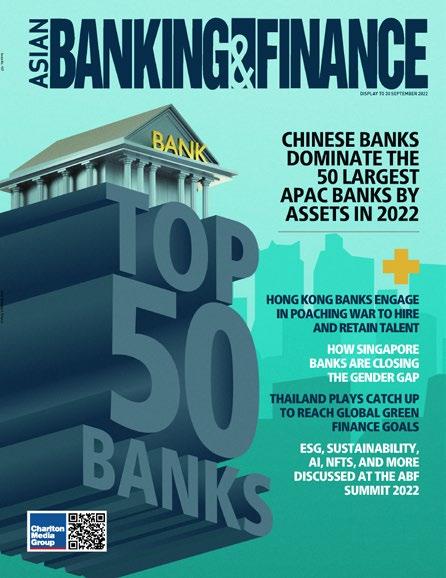










MEDIA PUBLISHER In Print, Online, Mobile, Events, Awards, and Research Display to December 31, 2022 MASSIVE ADOPTION OF TECH WITHOUT CRITICAL TECH ADVICE FROM EXPERTS COULD SPELL DOOM FOR BANKS. ASIA’S HEALTHCARE PIVOTS BACK TO NONCOMMUNICABLE DISEASE HOW SEA BUSINESSES CAN EXPAND THEIR SOCIAL MEDIA PRESENCE INGENIOUS BRANDS RECOGNISED AT THE ASIAN EXPERIENCE AWARDS 2021 ABR HONOURS THE WINNERS OF THE INAUGURAL MIDDLE EAST AWARDS BANKING ON TECH EXPERTS MEET THE WINNERS OF THE FMCG ASIA AWARDS 2021 CEO, Lazada Singapore Display to November 30, 2022 retailasia.com Fragrances now wear the ‘lipstick effect’ Tailor-fitting retail stores play catch-up on digitisation Retail ‘war’ starts before shoppers enter the store Figaro Coffee Group finds niche in pizza delivery From farm to cart: This e-grocer delivers fresh goods www.healthcareasiamagazine.comThe magazine for healthcare administrators and policy makers Display to 31 October 2022 MODELS FOR DIGITAL HEALTH TRANSFORMATION INDONESIA’S PONDOK INDAH GROUP HOSPITAL ACHIEVES HIGHEST ASSESSMENT IN DIGITAL MATURITY SINGHEALTH DUKE-NUS INVESTS IN ‘THE SEEDS OF THE FUTURE’ ONEONCO ALLOWS PATIENTS TO KICKSTART CANCER SUPPORT SYSTEM FOR $1 INTERNATIONAL AIDS SOCIETY TARGETS HIV’S ‘ACHILLES HEEL’ MALAYSIAN EYECARE CLINIC ELEVATES SERVICES WITH AI Pondok Indah Hospital BUSINESS TO BUSINESS ASIA’S LEADING
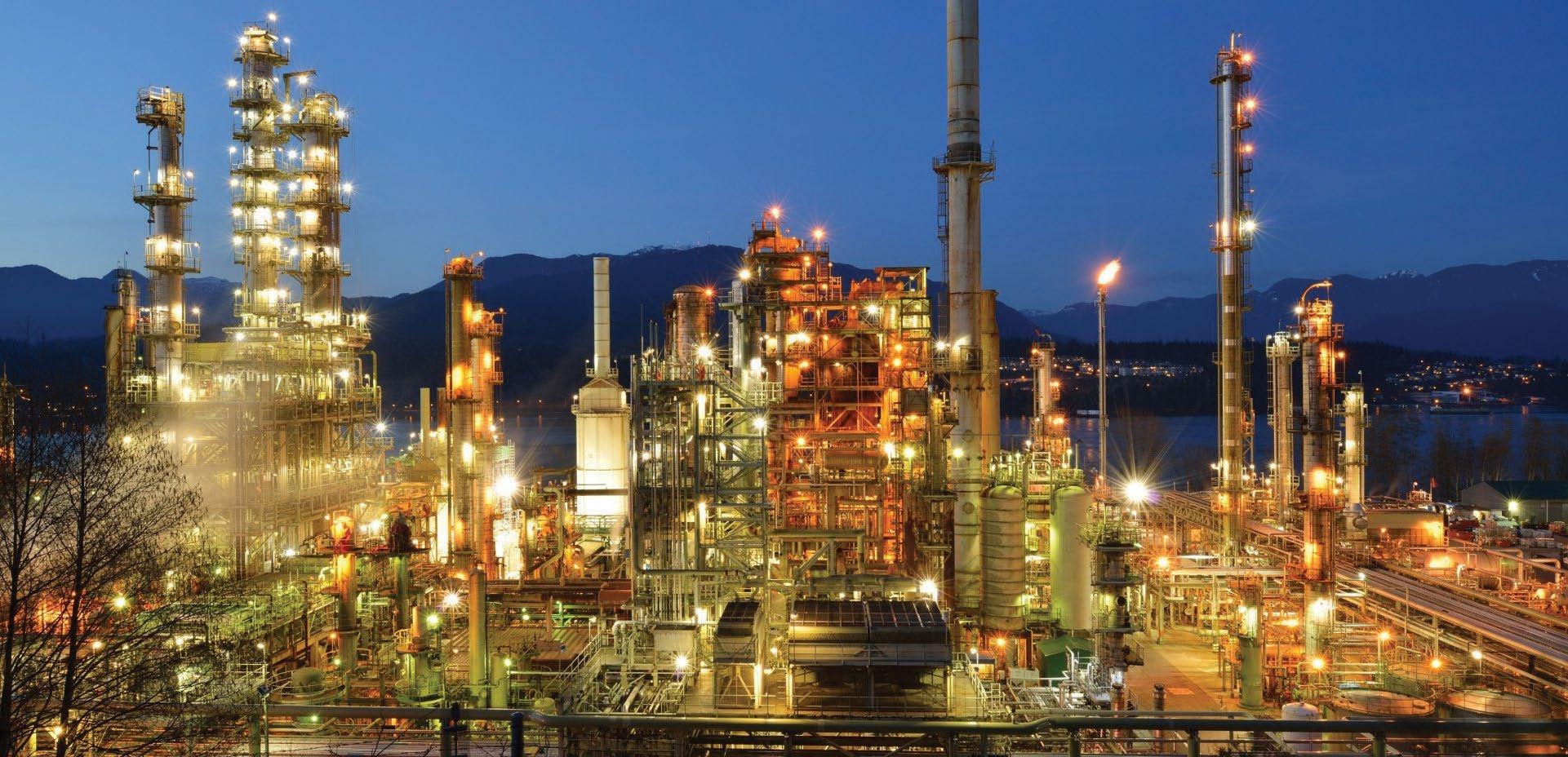















 Tim Charlton
Tim Charlton




















































































